Allergy in Body: Types, Symptoms, Causes, and Treatments
What are the different types of allergies? What are the common symptoms of allergies? What causes allergies? How are allergies treated? Explore these questions and more in this comprehensive guide.
Types of Allergies
Allergies can be triggered by a wide range of substances, including pollen, animal dander, mold, dust mites, and certain foods. Some of the most common types of allergies include:
Pollen Allergy (Hay Fever)
Seasonal allergic rhinitis, also known as hay fever, is an allergic response to pollen. It causes inflammation and swelling of the nasal lining and the protective tissue of the eyes. Symptoms include sneezing, congestion, and itchy, watery eyes, nose, and mouth. Treatment options include over-the-counter and prescription oral antihistamines, anti-leukotrienes, nasal steroids, nasal antihistamines, and nasal cromolyn.
Dust Mite Allergy
Dust mites are tiny organisms that live in dust and household items like pillows, mattresses, carpets, and upholstery. The symptoms of dust mite allergy are similar to those of pollen allergy. To manage dust mite allergies, use dust mite encasements, remove carpets, and vacuum frequently with a high-efficiency filter vacuum cleaner. Medications and immunotherapy may also be recommended.
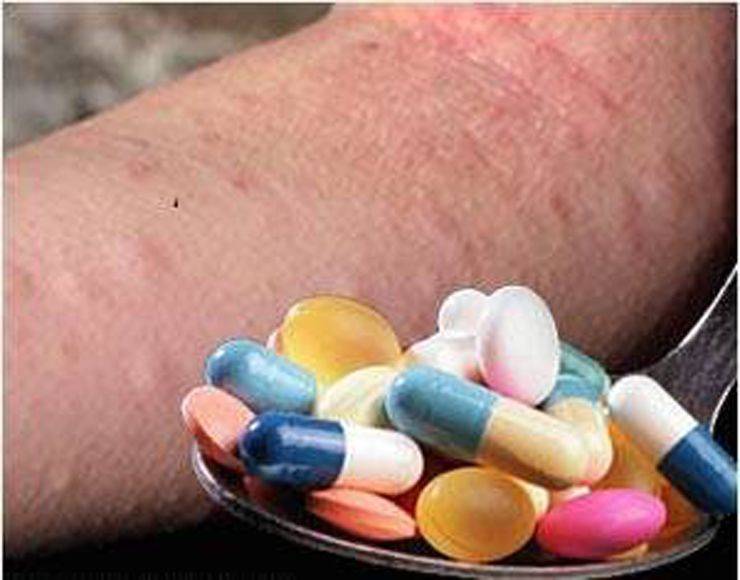
Mold Allergy
Mold is a common trigger for allergies. Mold spores can be found indoors in damp areas like the basement, kitchen, or bathroom, as well as outdoors in grass, leaf piles, hay, mulch, or under mushrooms. Treatment may include medications to control nasal/eye and chest symptoms, and immunotherapy may be recommended if symptoms are not adequately controlled with avoidance and medications.
Animal Dander Allergy
Allergic reactions can be caused by the proteins secreted by an animal’s sweat glands and the proteins in its saliva. Avoidance measures like keeping the pet out of the bedroom and washing the pet frequently can help, but removing the pet from the home may be the most effective solution. Medications and immunotherapy may also be recommended.
Latex Allergy
Some people develop a latex allergy after repeated contact with latex, such as from rubber gloves used in surgery or home cleaning. Symptoms can include skin rash, hives, eye tearing and irritation, wheezing, and itching. The best treatment is prevention and avoidance of latex products. If exposed, it’s important to have an emergency epinephrine kit on hand.
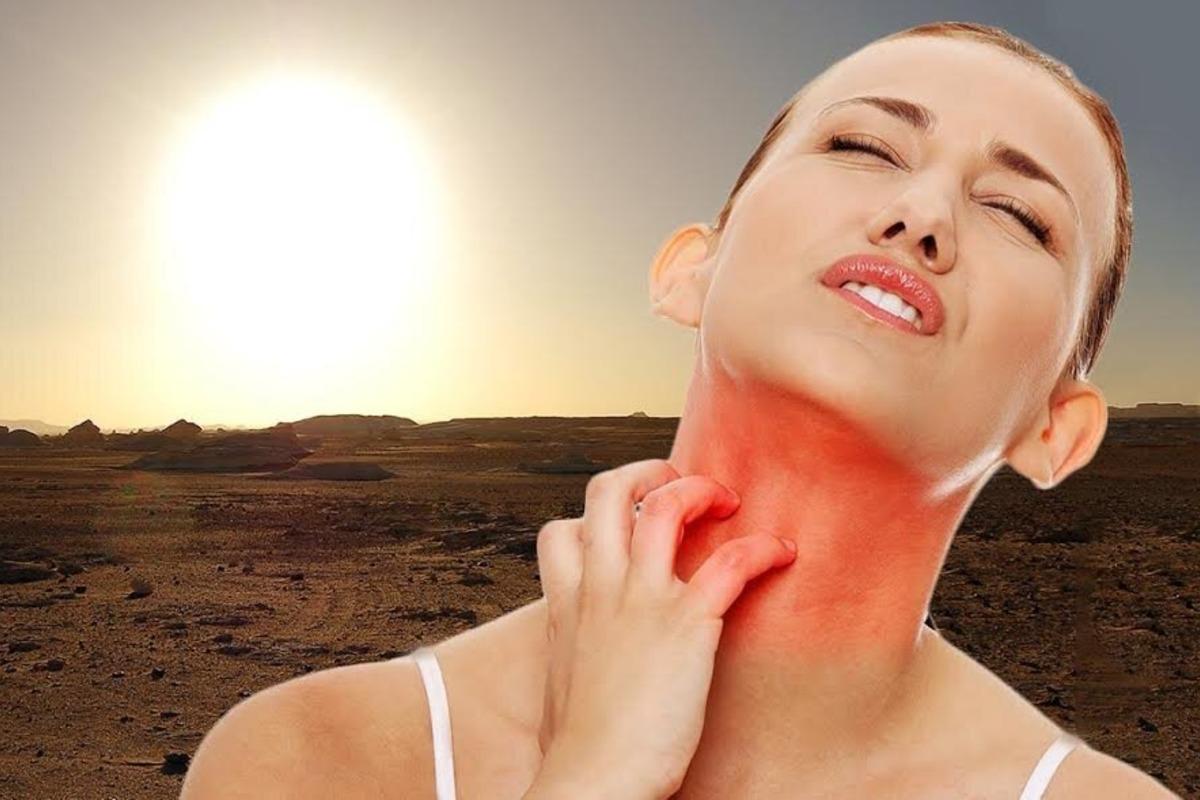
Food Allergy
Food allergies develop when the body produces specific antibodies to a particular food. An allergic reaction can occur within minutes of eating the food, and symptoms can be severe. The most common food allergens in adults are peanuts, tree nuts, shellfish, and fish.
Symptoms of Allergies
The most common symptoms of allergies include:
- Sneezing
- Congestion
- Itchy, watery eyes
- Itchy, runny nose
- Itchy, irritated skin
- Hives
- Wheezing
- Difficulty breathing
- Coughing
- Chest tightness
Causes of Allergies
Allergies are the result of the body’s immune system overreacting to a substance it perceives as a harmful “invader.” This triggers the release of chemicals like histamine, which lead to the symptoms of an allergic reaction.
Certain factors can increase the risk of developing allergies, including:
- Genetics (allergies tend to run in families)
- Environment (exposure to allergens like pollen, dust mites, or mold)
- Age (allergies can develop at any age, but are more common in children)
- Weakened immune system
- Certain medications
Treatments for Allergies
The main goals of allergy treatment are to reduce symptoms and prevent or minimize allergic reactions. Treatment options include:
:max_bytes(150000):strip_icc()/symptoms_05-472549cb96794c5c9d3e5549b9c5a938.png)
Avoidance
Avoiding or limiting exposure to the allergen is the first line of defense. This can include things like staying indoors with windows closed during high pollen counts, using air conditioning, and removing carpets or upholstered furniture to reduce dust mites.
Medications
Over-the-counter and prescription medications can help relieve allergy symptoms. These include antihistamines, decongestants, nasal corticosteroids, and leukotriene inhibitors.
Immunotherapy
Allergy shots or sublingual (under the tongue) immunotherapy can help desensitize the immune system and reduce the severity of allergic reactions over time.
Emergency Treatments
For severe allergic reactions (anaphylaxis), epinephrine auto-injectors are the first-line treatment. People with known severe allergies should carry an epinephrine kit at all times.
When to See a Doctor
If allergy symptoms are severe, persistent, or interfere with daily activities, it’s a good idea to see an allergist or other healthcare provider. They can help identify the specific allergen, recommend appropriate treatment, and develop a management plan.

Prevention and Management
In addition to treatment, there are steps you can take to help prevent and manage allergies:
- Identify and avoid known triggers
- Keep your home clean and dry to reduce dust mites and mold
- Use air purifiers and HEPA filters
- Wash bedding and clothing frequently
- Limit time outdoors when pollen or mold counts are high
- Consider immunotherapy if medications aren’t providing adequate relief
By understanding the types, causes, and treatments for allergies, you can take steps to better manage your symptoms and improve your quality of life.
Types, Symptoms, Causes & Treatments
Overview
What are allergies?
Allergies are your body’s reaction to a substance it views as a harmful “invader.” For example, coming into contact with what is normally a harmless substance, such as pollen, might cause your immune system (your body’s defense system) to react. Substances that cause these reactions are called allergens.
What is an allergic reaction?
An “allergic reaction” is the way your body responds to the allergen. A chain of events occur that result in an allergic reaction.
If you are prone to allergies, the first time you’re exposed to a specific allergen (such as pollen), your body responds by producing allergic (IgE) antibodies. The job of these antibodies is to find the allergens and help remove them from your system. As a result, a chemical called histamine is released and causes symptoms of allergies.
What are the types of allergies and how are they treated?
You can be allergic to a wide variety of substances – including pollen, animal dander, mold and dust mites.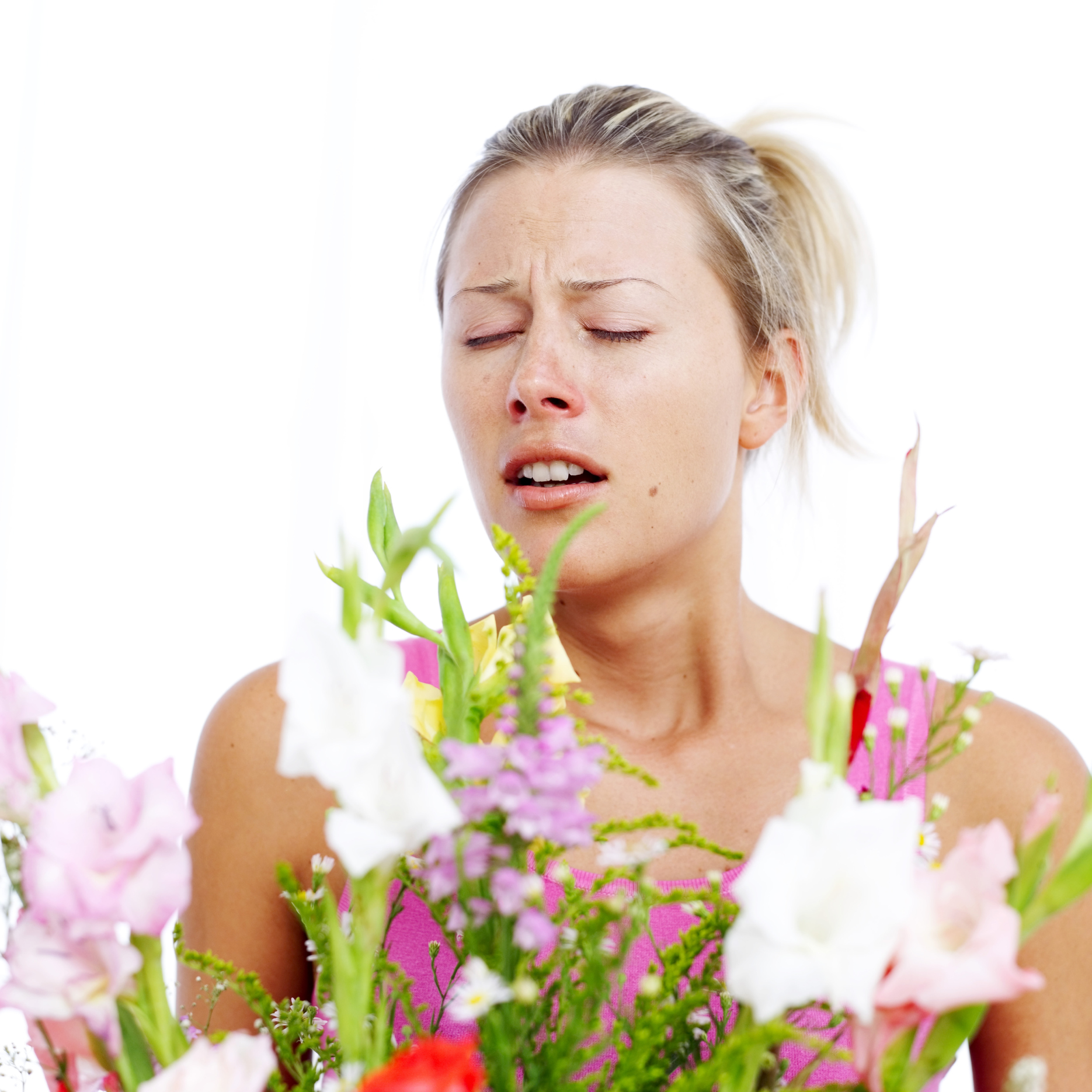
Pollen
Seasonal allergic rhinitis, or hay fever, is an allergic response to pollen. It causes inflammation and swelling of the lining of your nose and of the protective tissue of your eyes (conjunctiva).
Symptoms include sneezing, congestion (feeling stuffy), and itchy, watery eyes, nose and mouth. Treatment options include over-the-counter and prescription oral antihistamines, anti-leukotrienes, nasal steroids, nasal antihistamines, and nasal cromolyn. In some people, allergic asthma symptoms (wheezing, shortness of breath, coughing, and/ or chest tightness) can be caused by exposure to pollen.
Your symptoms can be reduced by avoiding pollen. Stay indoors when pollen counts are high, close your windows, and use air conditioning. Ask your healthcare provider about immunotherapy (“allergy shots”) to treat pollen allergy.
Dust mites
Dust mites are tiny organisms that live in dust and in the fibers of household objects, such as pillows, mattresses, carpet, and upholstery. Dust mites grow in warm, humid areas.
Dust mites grow in warm, humid areas.
The symptoms of dust mite allergy are similar to those of pollen allergy. To help manage dust mite allergies, try using dust mite encasements (airtight plastic/polyurethane covers) over pillows, mattresses, and box springs. Also, remove carpet, or vacuum frequently with a high-efficiency filter vacuum cleaner. Treatment may include medications to control your nasal/eye and chest symptoms. Immunotherapy may be recommended if your symptoms are not adequately controlled with avoidance methods and medications.
Molds
Molds are tiny fungi (like Penicillium) with spores that float in the air like pollen. Mold is a common trigger for allergies. Mold can be found indoors in damp areas, such as the basement, kitchen, or bathroom, as well as outdoors in grass, leaf piles, hay, mulch or under mushrooms. Mold spores reach a peak during hot, humid weather.
Treatment may include medications to control your nasal/eye and chest symptoms. Immunotherapy may be recommended if your symptoms are not adequately controlled with avoidance and medications.
Immunotherapy may be recommended if your symptoms are not adequately controlled with avoidance and medications.
Animal dander
Allergic reactions can be caused by the proteins secreted by sweat glands in an animal’s skin, which are shed in dander, and by the proteins in an animal’s saliva. Avoidance measures don’t work as well as simply removing the pet from your home. However, because many people are reluctant to do this, second-best measures include keeping your pet out of your bedroom, using air cleaners with HEPA filtration and washing your pet (cat or dog) frequently.
Treatment may include medications to control your nasal/eye and chest symptoms. Immunotherapy may be recommended if your symptoms are not adequately controlled with avoidance methods and medications.
Latex
Some people develop a latex allergy after repeated contact with latex. Rubber gloves, such as those used in surgery or home cleaning, are a major source for causing this type of reaction. Skin rash, hives, eye tearing and irritation, wheezing and itching of the skin may occur if you have a latex allergy.
Skin rash, hives, eye tearing and irritation, wheezing and itching of the skin may occur if you have a latex allergy.
Allergic reactions to latex can be mild, such as skin redness and itching. More severe reactions can occur if your mucosal membranes are exposed, such as during an operation or a dental or gynecologic exam.
Treatment of latex reactions begins by removing the offending latex product. If you have latex allergy, it is important for you to wear a Medic Alert® bracelet and carry an emergency epinephrine kit. All procedures should be carried out in a “latex-safe” fashion. There is no cure for latex allergy, so the best treatment for this condition is prevention and avoidance.
Certain foods
Food allergies develop when your body develops a specific antibody to a specific food. An allergic reaction occurs within minutes of eating the food, and symptoms can be severe. In adults, the most common food allergies are shellfish, peanuts and tree nuts. In children, they include milk, egg, soy, wheat, shellfish, peanuts and tree nuts.
In children, they include milk, egg, soy, wheat, shellfish, peanuts and tree nuts.
If you have a food allergy, your symptoms include itching, hives, nausea, vomiting, diarrhea, breathing difficulties and swelling around your mouth.
It is extremely important to avoid the foods that cause allergy symptoms. If you (or your child) have a food allergy, your doctor may prescribe injectable epinephrine (adrenaline) for you to carry at all times. This is needed in case you accidentally eat foods that cause allergies. There are new therapies for peanut allergies called oral immunotherapy.
Insect venom (stings)
If you get a bee sting, a normal reaction includes pain, swelling and redness around the sting site. A large, local reaction includes swelling that extends beyond the sting site. For example, if you are stung on the ankle, you may see swelling in your leg.
The most serious reaction to an insect sting is an allergic one, which needs immediate medical attention.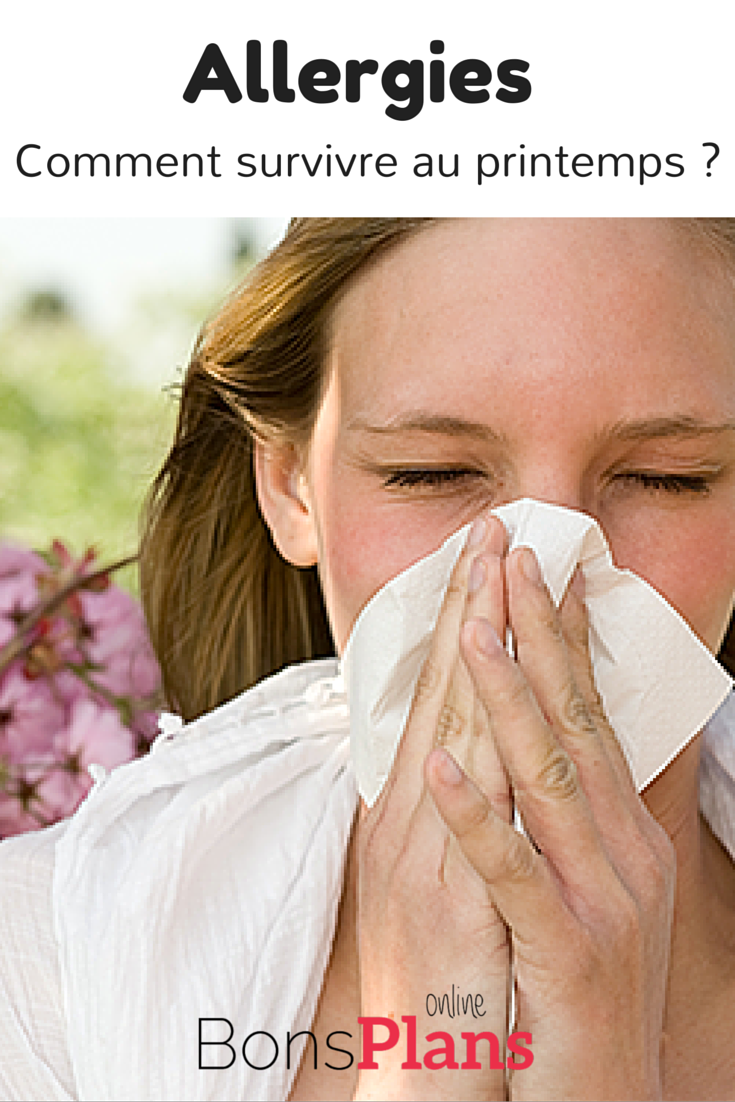 Symptoms of an allergic reaction to an insect sting include:
Symptoms of an allergic reaction to an insect sting include:
- Difficulty breathing.
- Generalized (widespread) hives that appear as a red, itchy rash that spreads to areas other than the area that was stung.
- Swelling of your face, throat or mouth tissue.
- Wheezing or difficulty swallowing.
- Restlessness and anxiety.
- Rapid pulse.
- Dizziness or a sharp drop in your blood pressure.
If you have a reaction like this, a re-sting can cause a serious reaction that can be life-threatening.
An allergic reaction is treated with epinephrine (adrenaline). If you’ve had an allergic reaction to bee stings, see a board-certified allergy/immunologist to get a skin and/or blood test to confirm your allergy to bee venom. Venom immunotherapy is recommended if venom allergy is confirmed. This will help reduce the possibility that a re-sting will cause a serious reaction.
What is allergic rhinitis?
Nasal allergy symptoms and hay fever are referred to as “allergic rhinitis. ” Seasonal allergic rhinitis is nasal allergies that change with the seasons because of pollen from plants (trees, grasses, or weeds). Seasonal symptoms arise during the pollinating seasons for particular plants. Because you can be allergic to more than one thing, your symptoms may get worse at different times throughout the year, or may be constant.
” Seasonal allergic rhinitis is nasal allergies that change with the seasons because of pollen from plants (trees, grasses, or weeds). Seasonal symptoms arise during the pollinating seasons for particular plants. Because you can be allergic to more than one thing, your symptoms may get worse at different times throughout the year, or may be constant.
Does everyone get allergies?
No. Most allergies are inherited, which means they are passed on to children by their parents. People inherit a tendency to be allergic, although not to any specific allergen. If your child develops an allergy, it is very likely that you or your partner has allergies.
How common are allergies?
More than 50 million Americans (1 in 6) experience all types of allergies, including indoor/outdoor allergies, food and drug, latex, insect, skin and eye allergies. The number of people who have allergies continues to increase across all ages, sex and racial groups.
Allergic Reactions: Symptoms, Triggers, and Treatments
Some people sneeze like crazy. Others get itchy hives or watery eyes. But whatever the reaction, it boils down to one thing: allergies.
Others get itchy hives or watery eyes. But whatever the reaction, it boils down to one thing: allergies.
If you have allergies, you have lots of company. As many as 30% of U.S. adults and 40% of children are in the same boat as you.
While your problem may seem to start in the nose or the eyes, allergies actually come from an immune system run wild.
Learning why these reactions happen can help you keep things under control and feel better.
Why Allergic Reactions Happen
Your immune system has an important job: to defend your body from invaders such as bacteria and viruses that mean you harm.
But when it makes war on substances it shouldn’t, that’s an allergy.
Peanuts, eggs, or pollen, for example, can trigger reactions. They are called allergens.
During a reaction, your immune system releases antibodies. These are proteins that deliver a message to cells: Stop that substance! The cells then send out histamine, which causes blood vessels to expand, and other chemicals, and these trigger the allergy symptoms.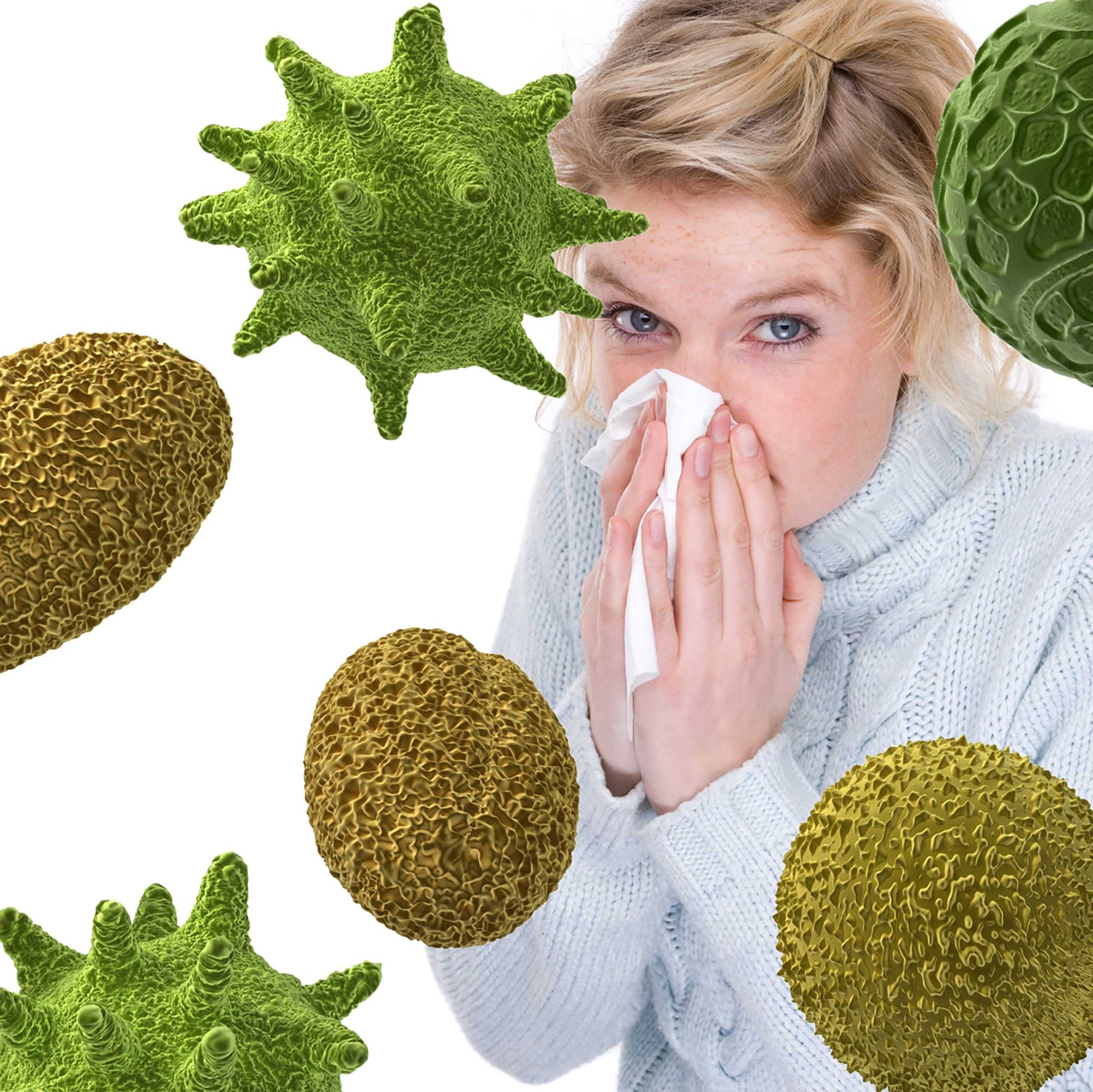
These antibodies are singled-minded. Each one targets only one type of allergen. That explains why someone might be allergic to peanuts but not to eggs.
You can come into contact with allergens in many ways: through the skin, eyes, nose, mouth, or stomach. This can cause your sinuses to clog up, inflame your skin, make it harder to breathe, or cause stomach problems.
What Things Most Often Cause an Attack?
Why do some people have such bad allergies and others don’t? Experts don’t have all the answers, but they say family history is important.
Some common allergens include:
The Symptoms, From Itchy Eyes to Sneezing
Your allergy attacks might range from mild and annoying to more severe and even life-threatening. It all depends on the way your body reacts and how much of the allergen got into your system.
If your allergy is severe, you may have a serious reaction called anaphylaxis. Some cases could be life-threatening and need urgent attention.
Here are some common types of allergies:
Hay fever: Also known as allergic rhinitis, it can cause:
Food allergies: You may feel tingling in your mouth. Your tongue, lips, throat, or face might swell up. Or you could get hives. In the worst cases, you might have anaphylaxis and will need medical help right away.
Eczema: Also known as atopic dermatitis, it is a skin condition. Most types of eczema are not allergies. But the disease can flare up when you’re around things that cause an allergic reaction. Your body’s immune system overreacts to substances, called allergens, that are usually not harmful. You might get hives, itching, swelling, sneezing, and a runny nose. You might have it if you have itching, redness, and peeling or flaking.
Medications: If you’re allergic to a certain drug, you may get a rash, facial swelling, or hives. You could find yourself wheezing. In severe cases, you may develop anaphylaxis.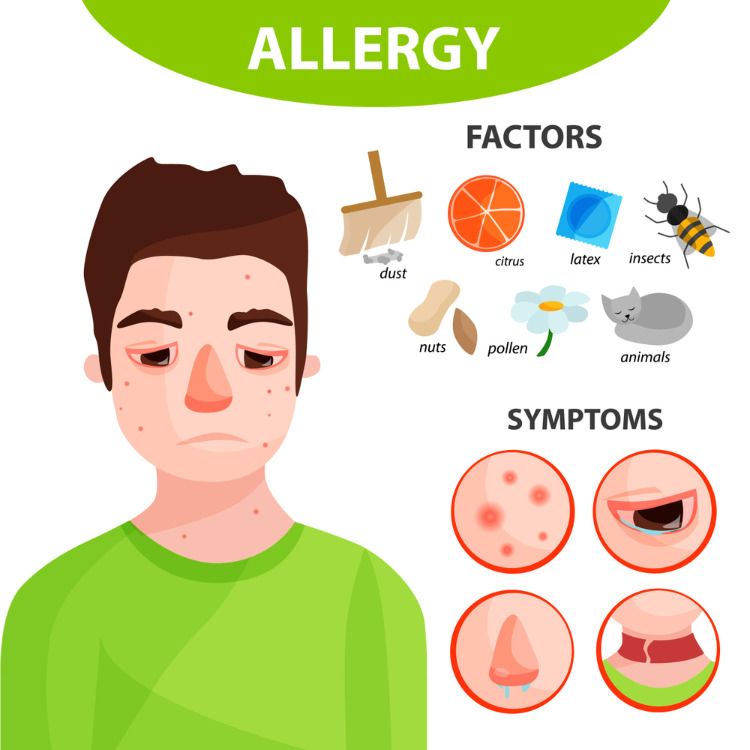
Stings: If you’re allergic to bees or other insects you may get:
- A large area of swelling, known as edema, at the site of the sting
- Itching or hives all over your body
- Shortness of breath, wheezing, chest tightness, or a cough
As with some other allergies, such as food and medication, a severe reaction to a sting can lead to anaphylaxis.
Anaphylaxis: What Is It and How to Get Help
Most people with allergies get only mild to moderate symptoms, but bad cases can lead to anaphylaxis.
It’s a serious situation and can put your body into shock. Food, medications, insect bites, or latex are the most likely causes.
A second anaphylactic episode can happen up to 12 hours after the first one.
The symptoms of anaphylaxis can come on suddenly.
They can quickly go from a mild rash or runny nose to serious problems such as a hard time breathing, tightness in the throat, hives or swelling, nausea or vomiting, and fainting or dizziness.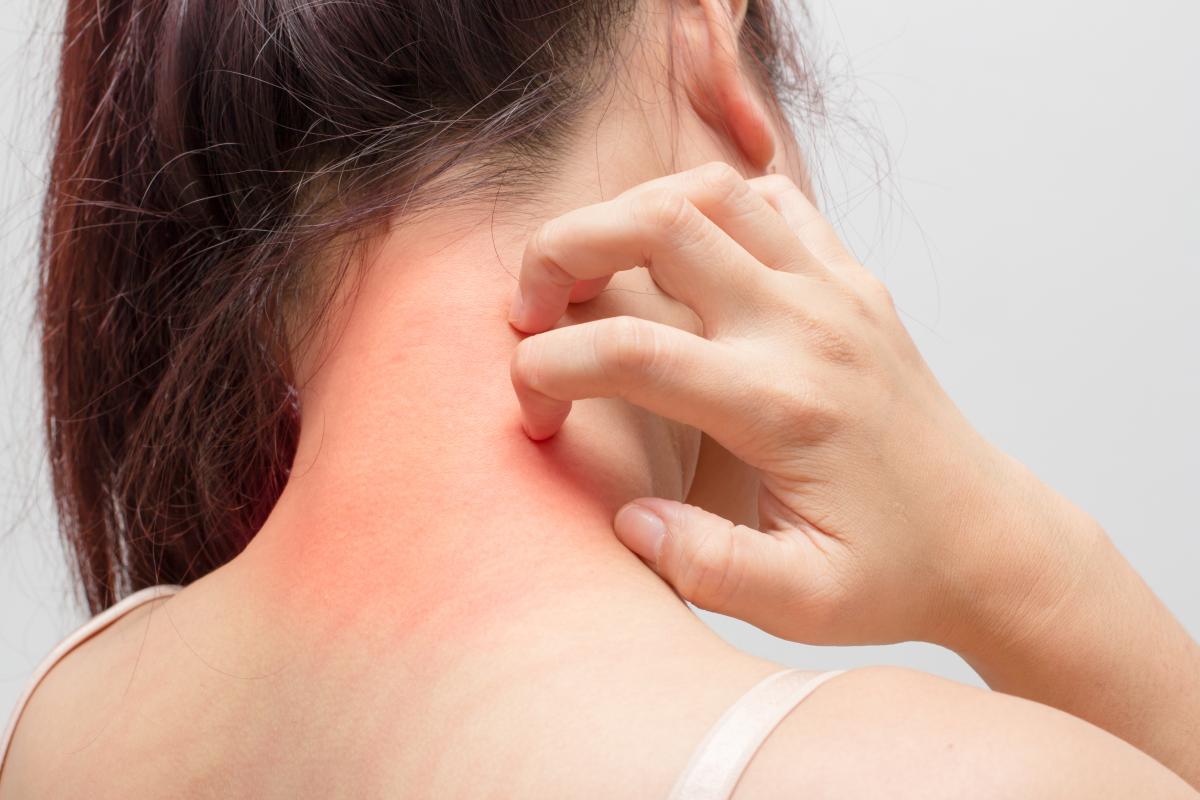 Some people can get a rapid pulse or their heart will stop beating.
Some people can get a rapid pulse or their heart will stop beating.
If you’ve had previous attacks or know you are at risk for anaphylaxis, your doctor might prescribe medicine that you can give yourself, or that someone else can give you. Adrenaclick, Auvi-Q, EpiPen, Symjepi or a generic version of an epinephrine auto-injector are devices loaded with this medicine.
Carry this with you always and be aware of your allergy triggers.
Call 911 and go straight to an emergency room at the first sign of trouble, even if you have used the injection device. Go even if you are starting to feel better, in case you have a delayed reaction.
How Can I Get Relief?
You can find treatment options for mild to moderate allergic reactions. Antihistamines and decongestants can help treat certain symptoms, as can nasal sprays.
If you have an allergic-type asthma, your doctor might also prescribe an inhaler to ease attacks. Or they may inject a special antibody to manage symptoms.
If you don’t get enough relief by avoiding your allergens and using medications, your doctor may want to give you allergy shots. This type of treatment is called immunotherapy, and it can be effective for hay fever and allergic asthma.
Another type of immunotherapy involves tablets that dissolve under your tongue.
For your sinuses, an over-the-counter medication might ease your symptoms.
Skin Allergy Symptoms, Diagnosis, Treatment & Management
Irritated skin can be caused by a variety of factors. These include immune system disorders, medications and infections. When an allergen is responsible for triggering an immune system response, then it is an allergic skin condition.
Atopic Dermatitis (Eczema)
Eczema is the most common skin condition, especially in children. It affects one in five infants but only around one in fifty adults. It is now thought to be due to “leakiness” of the skin barrier, which causes it to dry out and become prone to irritation and inflammation by many environmental factors. Also, some young children with eczema have a food sensitivity which can make eczema symptoms worse. In about half of patients with severe atopic dermatitis, the disease is due to inheritance of a faulty gene in their skin called filaggrin. Unlike with urticaria (hives), the itch of eczema is not only caused by histamine so anti-histamines may not control the symptoms. Eczema is often linked with asthma, allergic rhinitis (hay fever) or food allergy. This order of progression is called the atopic march.
Also, some young children with eczema have a food sensitivity which can make eczema symptoms worse. In about half of patients with severe atopic dermatitis, the disease is due to inheritance of a faulty gene in their skin called filaggrin. Unlike with urticaria (hives), the itch of eczema is not only caused by histamine so anti-histamines may not control the symptoms. Eczema is often linked with asthma, allergic rhinitis (hay fever) or food allergy. This order of progression is called the atopic march.
Allergic Contact Dermatitis
Allergic contact dermatitis occurs when your skin comes in direct contact with an allergen. For instance, if you have a nickel allergy and your skin comes in contact with jewelry made with even a very small amount of nickel, you may develop red, bumpy, scaly, itchy or swollen skin at the point of contact.
Coming in contact with poison ivy, poison oak and poison sumac can also cause allergic contact dermatitis. The red, itchy rash is caused by an oily coating covering these plants. The allergic reaction can come from actually touching them, or by touching clothing, pets or even gardening tools that have come in contact with the oil.
The allergic reaction can come from actually touching them, or by touching clothing, pets or even gardening tools that have come in contact with the oil.
Urticaria (Hives)
Hives are an inflammation of the skin triggered when the immune system releases histamine. This causes small blood vessels to leak, which leads to swelling in the skin. Swelling in deep layers of the skin is called angioedema. There are two kinds of urticaria, acute and chronic. Acute urticaria occurs at times after eating a particular food or coming in contact with a particular trigger. It can also be triggered by non-allergic causes such as heat or exercise, as well as medications, foods, insect bites or infections. Chronic urticaria is rarely caused by specific triggers and so allergy tests are usually not helpful. Chronic urticaria can last for many months or years. Although they are often uncomfortable and sometimes painful, hives are not contagious.
Angioedema
Angioedema is swelling in the deep layers of the skin.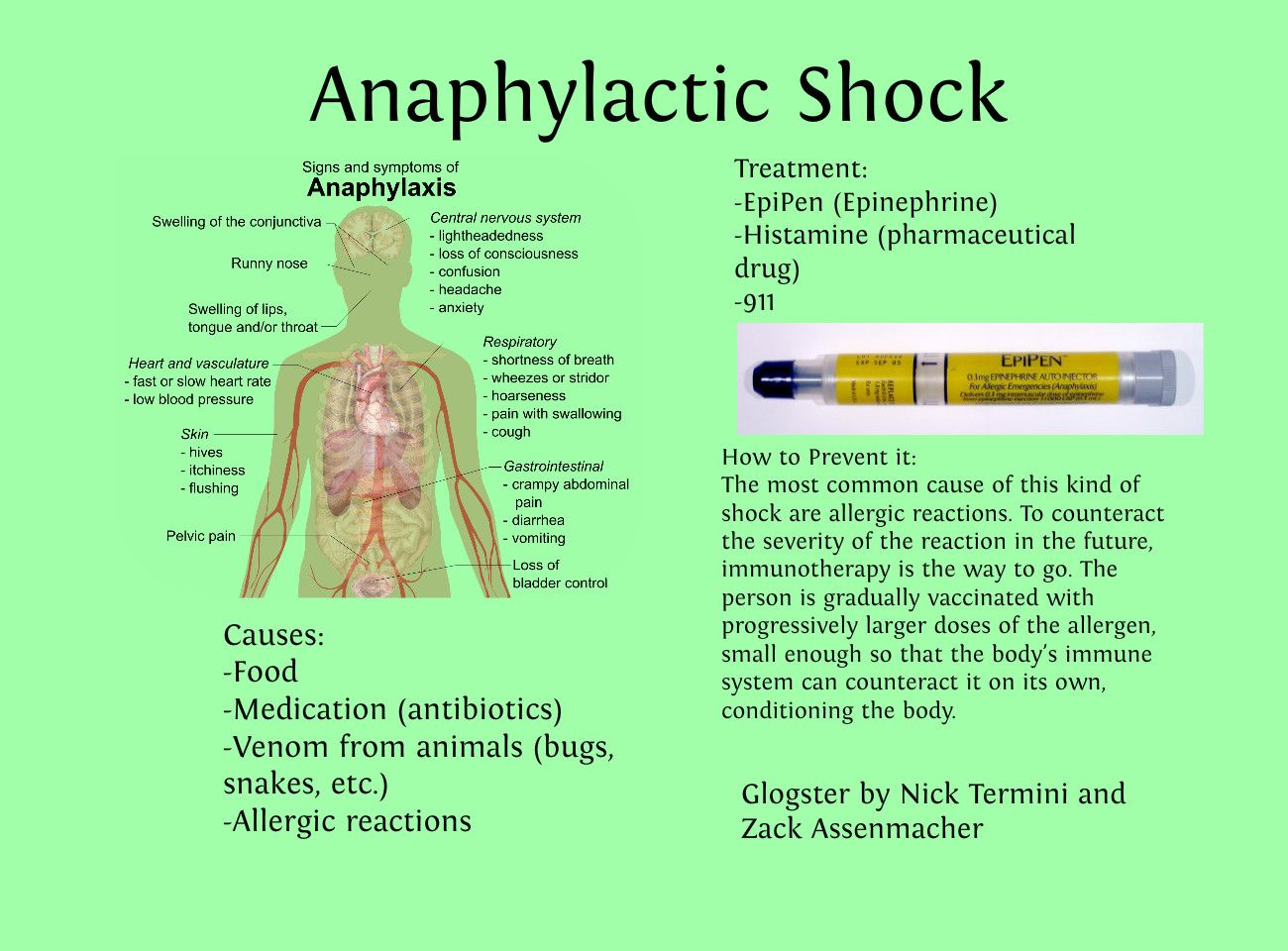 It is often seen together with urticaria (hives). Angioedema many times occurs in soft tissues such as the eyelids, mouth or genitals. Angioedema is called “acute” if the condition lasts only a short time such as minutes to hours. Acute angioedema is commonly caused by an allergic reaction to medications or foods. Chronic recurrent angioedema is when the condition returns over a long period of time. It typically does not have an identifiable cause.
It is often seen together with urticaria (hives). Angioedema many times occurs in soft tissues such as the eyelids, mouth or genitals. Angioedema is called “acute” if the condition lasts only a short time such as minutes to hours. Acute angioedema is commonly caused by an allergic reaction to medications or foods. Chronic recurrent angioedema is when the condition returns over a long period of time. It typically does not have an identifiable cause.
Hereditary angiodema (HAE)
Hereditary angiodema (HAE) is a rare, but serious genetic condition involving swelling in various body parts including the hands, feet, face, intestinal wall and airways. It does not respond to treatment with antihistamines or adrenaline so it is important to go see a specialist.
Skin conditions are one of the most common forms of allergy treated and managed by an allergist / immunologist, a physician with specialized training and expertise to accurately diagnose your condition and provide relief for your symptoms.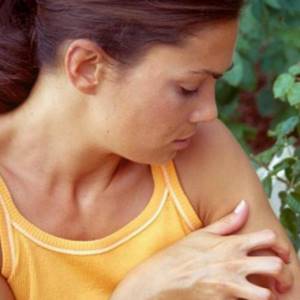
Keep pace with the latest information and connect with others. Join us on Facebook and Twitter.
Test your knowledge about skin allergies. »
Test your knowledge about hives. »
Test your knowledge about contact dermatitis. »
Test your knowledge about eczema. »
Itching, redness and swelling are common to most skin allergies. Yet there are some differences that help in the diagnosis of specific conditions.
Atopic Dermatitis (Eczema)
Symptoms
Itchy, red or dry skin. It may “weep” or leak fluid that crusts over when scratched, which means that it is also infected.
In infants, eczema often appears on the face. Children are prone to have the rash at the bends of the elbow joint, wrists, behind the knees and behind the ears.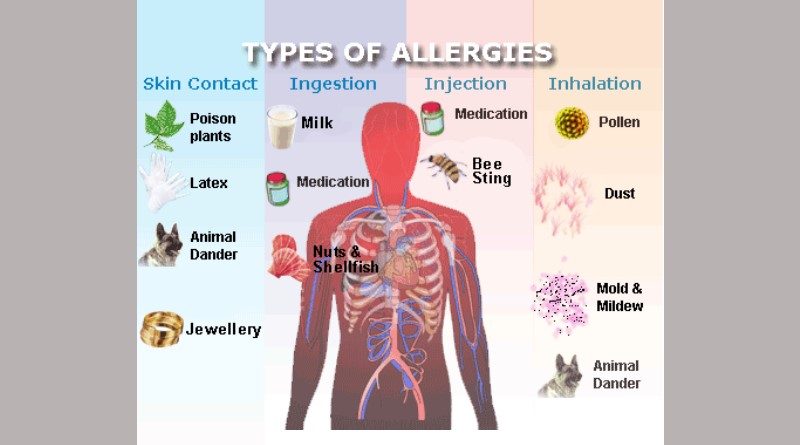 Adolescents and young adults typically have the rash in the same locations as children, as well as on the hands and feet.
Adolescents and young adults typically have the rash in the same locations as children, as well as on the hands and feet.
Patients with the faulty filaggrin gene often have hand eczema with excessive little lines on the skin of their palms.
Diagnosis
In many children, the exact cause of the eczema is not clear and treatment depends on regular use of moisturizer and topical medicines to dampen down the inflammation. One such treatment is topical steroids. In children where the skin is oozing, crusting and painful, an infection that needs treatment with antibiotics may be the primary trigger.
Infants and young children with more severe eczema should be evaluated for food allergy. It’s important to see an allergist / immunologist for diagnosis and management. It is often needed to receive input from a dietitian as well.
Food allergies causing eczema are much less common in older children and adults. If you are suspected of having eczema that is caused by a food allergy, a confirmed diagnosis requires avoiding the trigger food for about four weeks with the help of a dietitian before doing a food challenge under your doctor’s supervision to confirm that the food was actually causing the flare.
Urticaria (Hives) and Angioedema
Symptoms
Urticaria is itchy, red and white raised bumps or welts that range in size and can appear anywhere on the body. Angioedema often appears on the face around the eyes, cheeks or lips. This deeper layer of swelling can also occur on hands, feet, genitals, or inside the bowels or throat. In acute urticaria, the welts disappear within minutes to a few weeks. Chronic hives last for months or even years.
Diagnosis
In the majority of chronic cases, the exact cause cannot be determined. Routine testing such as general blood counts or screens are not cost-effective, nor do these tests make a difference in treatment strategies to relieve the symptoms. There are certain instances when allergy testing is helpful, especially when eating a particular food or coming in contact with a particular substance triggers symptoms of acute hives.
Videos: Choosing Wisely »
Atopic Dermatitis (Eczema)
Eczema is sometimes described as an “itch which rashes. ” The rash is caused by scratching, so the more the patient scratches the more severe the rash will be. This is why it’s important to avoid scratching.
” The rash is caused by scratching, so the more the patient scratches the more severe the rash will be. This is why it’s important to avoid scratching.
The most effective way to treat eczema is to use moisturizers and topical ointments that reduce the inflammation e.g. topical steroids, calcineurin inhibitors or a phosphodiesterase 4 inhibitor. The itch is not relieved by antihistamines although these are sometimes used at night to help people with eczema sleep. Dupilumab is an injectable biologic therapy that is used to treat adults and children 6 years of age and older with moderate-to-severe atopic dermatitis that is otherwise difficult to control.
Antibiotics may be prescribed if a skin bacterial infection is suspected as a trigger for your eczema flare-up. Symptoms include crusting, oozing and pain. Oral steroids should be avoided, as although they are effective the eczema usually returns when the medicine is stopped. Oral steroids can also cause serious side-effects if taken for long periods of time.
Sometimes cotton undergarments and body suits help protect the skin from irritants and from scratching. Avoid using soap products that contain sodium laurel sulfate and any triggers that cause a reaction. Your allergist will be able to help determine whether there is a trigger that can be avoided.
These skin allergy treatment and management strategies can relieve social challenges as well. People with eczema, especially children, are sometimes ignored or singled out by others who believe the rash is contagious.
Urticaria (Hives) and Angioedema
If the cause of your hives can be identified, you can manage the condition by avoiding that trigger. Treating hives or angioedema is often successful with oral antihistamines that control the itch and recurrence of the rash.
If the rash is not controlled with a standard dose of the antihistamine, your doctor may suggest increasing the dose for better control of your symptoms. If antihistamines do not control the rash, or if it leaves bruises, then it is important that your doctor rules out other causes which may need alternative therapies. Sometimes chronic hives without a known cause may be resistant to antihistamine treatment. Omalizumab is an injectable biologic therapy that may be useful in such cases.
Sometimes chronic hives without a known cause may be resistant to antihistamine treatment. Omalizumab is an injectable biologic therapy that may be useful in such cases.
If you are on certain blood pressure medicines (ACE inhibitors) and develop angioedema, it is important to consult your doctor. Changing to another blood pressure medicine may help the angioedema go away.
Allergies explained – Better Health Channel
An allergy occurs when the body overreacts to an allergen or ‘trigger’ that is typically harmless to most people. Examples of allergies include hay fever, asthma, eczema, hives and food allergy. Estimates suggest that about one person in four is allergic to something and roughly half of all allergy sufferers are children. The symptoms of an allergy range from mild to severe. The most severe type of allergic reaction is anaphylaxis, which may cause death without prompt medical attention. In most cases, effective treatments are available to manage or treat allergy symptoms.
Symptoms of allergies
Symptoms depend on the allergy, but may include:
- Swelling of lips, face, eyes.
- Sneezing.
- Runny nose.
- Red, watery and itchy eyes.
- Wheeze or persistent cough.
- Breathing problems.
- Swelling tongue and tightness of throat.
- Headache.
- Skin rash.
- Stomach pains.
- Vomiting and diarrhoea.
Do not self-diagnose. The symptoms and signs of allergies are common to many other medical conditions. It is important to see your doctor for professional diagnosis and treatment.
Common allergens
A substance in the environment that can cause an allergic reaction in susceptible people is called an ‘allergen’. There are many different allergens, but they all share one thing in common – protein. Some allergens don’t contain protein to begin with, but bind with protein once inside the body to provoke the allergic reaction.
Common allergens include:
- Food – such as crustaceans, eggs, fish, milk, peanuts, tree nuts (for example, almonds, cashews, pecans and walnuts), sesame and soy products.

- Plants – pollen from grasses and plants.
- Medicines – including prescription medications (such as penicillin), over-the-counter medicines (such as aspirin) and herbal preparations.
- Insects – such as dust mites and the venom from bees, ticks, ants and wasps.
- Moulds – such as mushroom and mould spores.
- Animal dander – such as the fur and skin flakes from domestic pets such as cats and dogs.
- Chemicals – including industrial and household chemicals and chemical products such as latex rubber.
The immune system reaction
Allergy is the result of mistaken identity. An allergen enters the body and is wrongly identified by the immune system as a dangerous substance. In response, the immune system makes antibodies to attack the allergen. These are specific antibodies of the IgE (immunoglobulin E) class.
When an allergen is found, IgE antibodies trigger a cascade of immune system reactions, including the release of chemicals known as mast cell chemicals.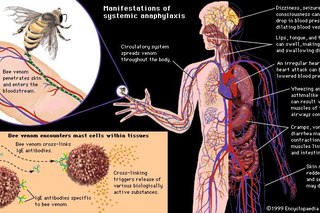 These are substances that the body normally uses to destroy micro-organisms. The most common of these is histamine. In small amounts, histamine causes itching and reddening of the local area. In large amounts, the nearby blood vessels become dilated and the area swells with accumulated fluid.
These are substances that the body normally uses to destroy micro-organisms. The most common of these is histamine. In small amounts, histamine causes itching and reddening of the local area. In large amounts, the nearby blood vessels become dilated and the area swells with accumulated fluid.
The immune system’s tendency to overreact to a harmless substance is thought to be genetic. The term ‘atopy’ describes this genetic tendency. Doctors describe a person who has an allergy as being ‘atopic’ – such people usually have raised levels of IgE in their blood.
Where to get help
Allergic Reaction | HealthLink BC
Are you concerned about an allergic reaction?
Yes
Allergic reaction concerns
No
Allergic reaction concerns
How old are you?
Less than 12 years
Less than 12 years
12 years or older
12 years or older
Are you male or female?
Why do we ask this question?
The medical assessment of symptoms is based on the body parts you have.
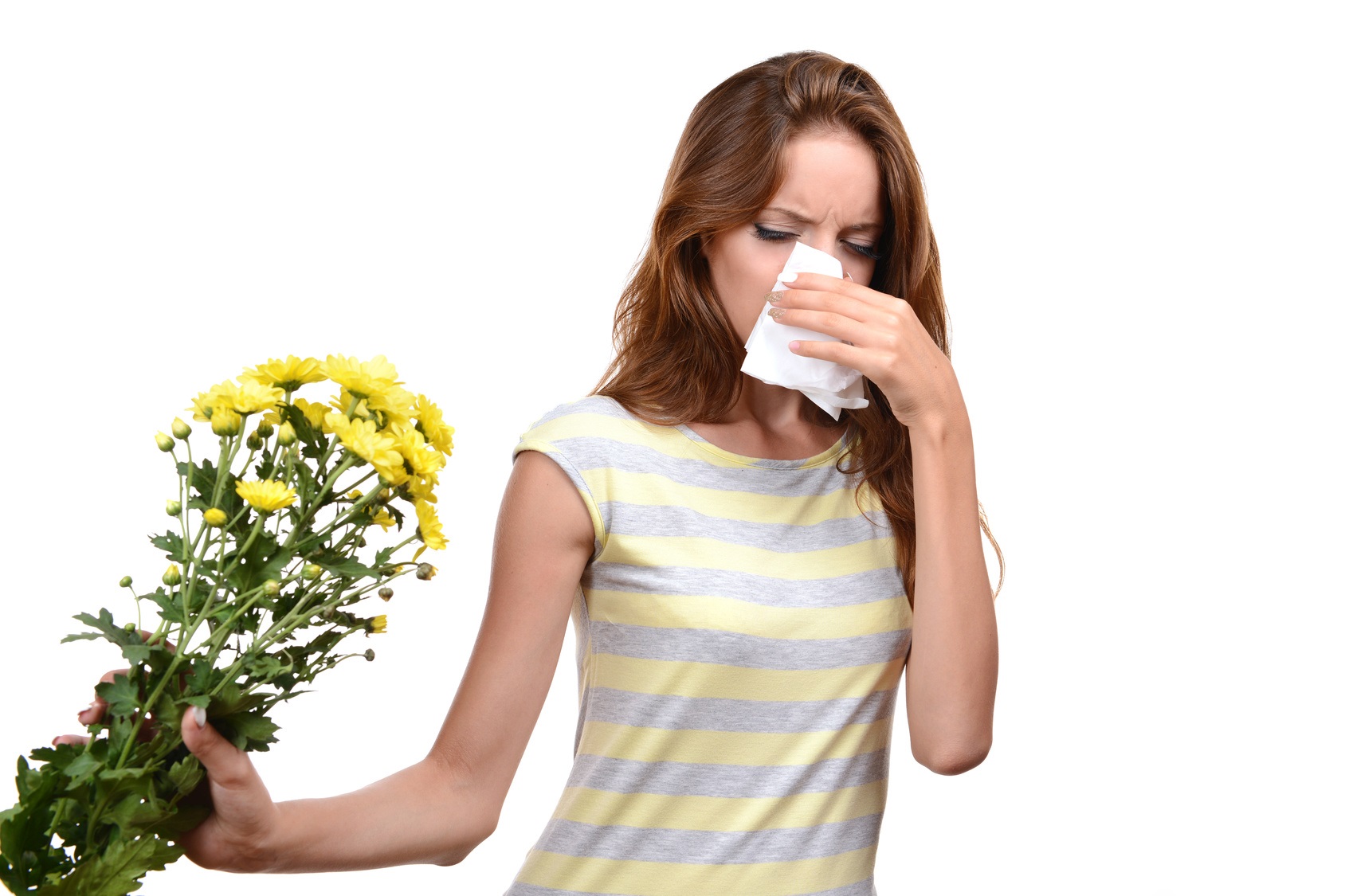
- If you are transgender or non-binary, choose the sex that matches the body parts (such as ovaries, testes, prostate, breasts, penis, or vagina) you now have in the area where you are having symptoms.
- If your symptoms aren’t related to those organs, you can choose the gender you identify with.
- If you have some organs of both sexes, you may need to go through this triage tool twice (once as “male” and once as “female”). This will make sure that the tool asks the right questions for you.
Could you be having a severe allergic reaction?
This is more likely if you have had a bad reaction to something in the past.
Yes
Possible severe allergic reaction (anaphylaxis)
No
Possible severe allergic reaction (anaphylaxis)
Have you ever had a severe allergic reaction?
A severe allergic reaction affects the whole body. Your doctor may have called it anaphylaxis.
Yes
History of severe allergic reaction
No
History of severe allergic reaction
Have you been exposed to the same thing (or something similar to it) that caused a severe reaction in the past?
For example, this could be an insect, a certain food, or a type of medicine or drug.
Yes
Reexposed to substance that caused past severe reaction
No
No new exposure to substance that caused past severe reaction
Not sure
Possibly reexposed to substance that caused past severe reaction
If your allergen exposure happened in the last 2 days, are you having any symptoms of an allergic reaction now, even mild ones?
Yes
History of severe reaction with symptoms now
No
History of severe reaction with symptoms now
Are you having trouble breathing (more than a stuffy nose)?
Yes
Difficulty breathing more than a stuffy nose
No
Difficulty breathing more than a stuffy nose
Is there any new swelling?
Are the lips, tongue, mouth, or throat swollen?
Yes
Swelling of lips, tongue, mouth, or throat
No
Swelling of lips, tongue, mouth, or throat
Did the lips, tongue, mouth, or throat swell quickly?
Yes
Rapid swelling of lips, tongue, mouth, or throat
No
Rapid swelling of lips, tongue, mouth, or throat
Does swelling involve the palms of the hands, the soles of the feet, or the area from one large joint to another, such as from the ankle to the knee?
Yes
Swelling is across two joints, on soles of feet, or on palms of hands
No
Swelling is across two joints, on soles of feet, or on palms of hands
Is the swelling getting worse (over hours or days)?
Yes
Swelling is getting worse
No
Swelling is getting worse
Did you get an epinephrine shot to treat the reaction?
Yes
Has had epinephrine shot
No
Has had epinephrine shot
Is most of your body covered in hives?
Hives are raised, red, itchy patches of skin.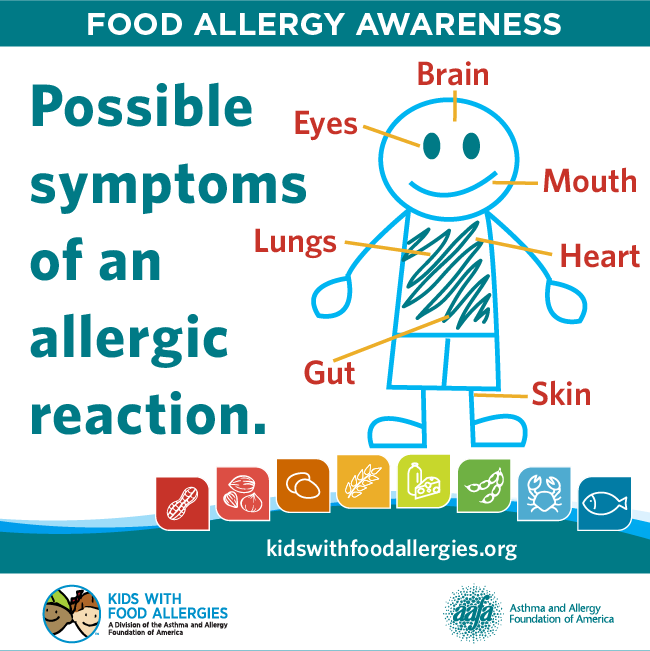 They usually have red borders and pale centres. They may seem to move from place to place on the skin.
They usually have red borders and pale centres. They may seem to move from place to place on the skin.
Yes
Hives covering most of body
No
Hives covering most of body
Did the hives appear within the past 3 hours?
Yes
Hives appeared within past 3 hours
No
Hives appeared within past 3 hours
Do you think you may have a fever?
Are there red streaks leading away from the area or pus draining from it?
Do you have diabetes, a weakened immune system, peripheral arterial disease, or any surgical hardware in the area?
“Hardware” includes things like artificial joints, plates or screws, catheters, and medicine pumps.
Yes
Diabetes, immune problems, peripheral arterial disease, or surgical hardware in affected area
No
Diabetes, immune problems, peripheral arterial disease, or surgical hardware in affected area
Is the itching severe?
Severe means that you are scratching so hard that your skin is cut or bleeding.
Has the itching interfered with sleeping or normal activities for more than 2 days?
Yes
Itching has disrupted sleep or normal activities for more than 2 days
No
Itching has disrupted sleep or normal activities for more than 2 days
Could you be having an allergic reaction to a medicine or a vaccine?
Almost any medicine can cause an allergic reaction. Think about whether the problem started soon after you began using a new medicine or a higher dose of a medicine. Or did it start after you got a shot or vaccine?
Yes
Medicine or vaccine may be causing allergic reaction
No
Medicine or vaccine may be causing allergic reaction
Have your symptoms lasted longer than 2 weeks?
Yes
Symptoms for more than 2 weeks
No
Symptoms for more than 2 weeks
Many things can affect how your body responds to a symptom and what kind of care you may need. These include:
- Your age.
 Babies and older adults tend to get sicker quicker.
Babies and older adults tend to get sicker quicker. - Your overall health. If you have a condition such as diabetes, HIV, cancer, or heart disease, you may need to pay closer attention to certain symptoms and seek care sooner.
- Medicines you take. Certain medicines and natural health products can cause symptoms or make them worse.
- Recent health events, such as surgery or injury. These kinds of events can cause symptoms afterwards or make them more serious.
- Your health habits and lifestyle, such as eating and exercise habits, smoking, alcohol or drug use, sexual history, and travel.
Try Home Treatment
You have answered all the questions. Based on your answers, you may be able to take care of this problem at home.
- Try home treatment to relieve the symptoms.

- Call your doctor if symptoms get worse or you have any concerns (for example, if symptoms are not getting better as you would expect). You may need care sooner.
Symptoms of infection may include:
- Increased pain, swelling, warmth, or redness in or around the area.
- Red streaks leading from the area.
- Pus draining from the area.
- A fever.
Symptoms of a severe allergic reaction can start within minutes of eating or being exposed to an allergen. While symptoms usually occur within 2 hours, in rare cases the time frame can vary up to several hours after exposure. Do not ignore early symptoms. When a reaction begins, it is important to respond right away.
Symptoms of a severe allergic reaction can vary from person to person. The same person can have different symptoms each time they have a severe allergic reaction. Symptoms can include any of the following:
The same person can have different symptoms each time they have a severe allergic reaction. Symptoms can include any of the following:
- Skin: hives, swelling (face, lips, tongue), itching, warmth, redness
- Respiratory (breathing): coughing, wheezing, shortness of breath, chest pain or tightness, throat tightness, hoarse voice, nasal congestion or hay fever-like symptoms (runny, itchy nose and watery eyes, sneezing), trouble swallowing
- Gastrointestinal (stomach): nausea, pain or cramps, vomiting, diarrhea
- Cardiovascular (heart): paler than normal skin colour/blue colour, weak pulse, passing out, dizziness or lightheadedness, shock
- Other: anxiety, sense of doom (the feeling that something bad is about to happen), headache, uterine cramps, metallic taste
A severe reaction can take place without hives, so make sure to look out for all of the signs of an allergic reaction.
Symptoms of difficulty breathing can range from mild to severe. For example:
- You may feel a little out of breath but still be able to talk (mild difficulty breathing), or you may be so out of breath that you cannot talk at all (severe difficulty breathing).
- It may be getting hard to breathe with activity (mild difficulty breathing), or you may have to work very hard to breathe even when you’re at rest (severe difficulty breathing).
Certain health conditions and medicines weaken the immune system’s ability to fight off infection and illness. Some examples in adults are:
- Diseases such as diabetes, cancer, heart disease, and HIV/AIDS.
- Long-term alcohol and drug problems.
- Steroid medicines, which may be used to treat a variety of conditions.

- Chemotherapy and radiation therapy for cancer.
- Other medicines used to treat autoimmune disease.
- Medicines taken after organ transplant.
- Not having a spleen.
Shock is a life-threatening condition that may quickly occur after a sudden illness or injury.
Adults and older children often have several symptoms of shock. These include:
- Passing out (losing consciousness).
- Feeling very dizzy or light-headed, like you may pass out.
- Feeling very weak or having trouble standing.
- Not feeling alert or able to think clearly. You may be confused, restless, fearful, or unable to respond to questions.
Shock is a life-threatening condition that may occur quickly after a sudden illness or injury.
Babies and young children often have several symptoms of shock. These include:
- Passing out (losing consciousness).
- Being very sleepy or hard to wake up.
- Not responding when being touched or talked to.
- Breathing much faster than usual.
- Acting confused. The child may not know where he or she is.
Make an Appointment
Based on your answers, the problem may not improve without medical care.
- Make an appointment to see your doctor in the next 1 to 2 weeks.
- If appropriate, try home treatment while you are waiting for the appointment.
- If symptoms get worse or you have any concerns, call your doctor. You may need care sooner.
Seek Care Today
Based on your answers, you may need care soon.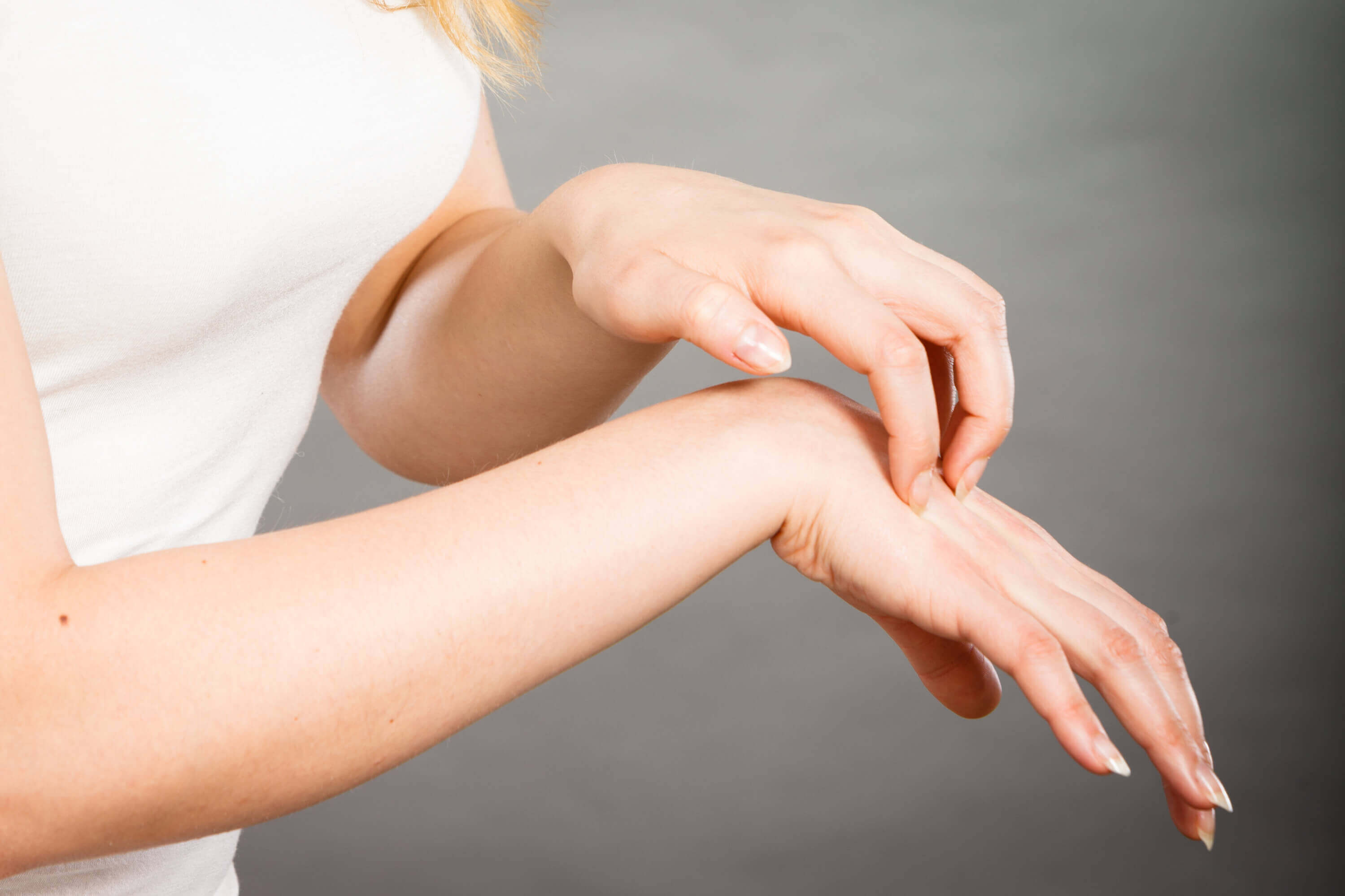 The problem probably will not get better without medical care.
The problem probably will not get better without medical care.
- Call your doctor today to discuss the symptoms and arrange for care.
- If you cannot reach your doctor or you don’t have one, seek care today.
- If it is evening, watch the symptoms and seek care in the morning.
- If the symptoms get worse, seek care sooner.
Seek Care Now
Based on your answers, you may need care right away. The problem is likely to get worse without medical care.
- Call your doctor now to discuss the symptoms and arrange for care.
- If you cannot reach your doctor or you don’t have one, seek care in the next hour.
- You do not need to call an ambulance unless:
- You cannot travel safely either by driving yourself or by having someone else drive you.

- You are in an area where heavy traffic or other problems may slow you down.
- You cannot travel safely either by driving yourself or by having someone else drive you.
Call 911 Now
Based on your answers, you need emergency care.
Call 911 or other emergency services now.
If you have an epinephrine shot, use it while you wait for help to arrive. Follow the directions on the label about how to give the shot.
Sometimes people don’t want to call 911. They may think that their symptoms aren’t serious or that they can just get someone else to drive them. But based on your answers, the safest and quickest way for you to get the care you need is to call 911 for medical transport to the hospital.
Seek Care Now
Based on your answers, you may need care right away.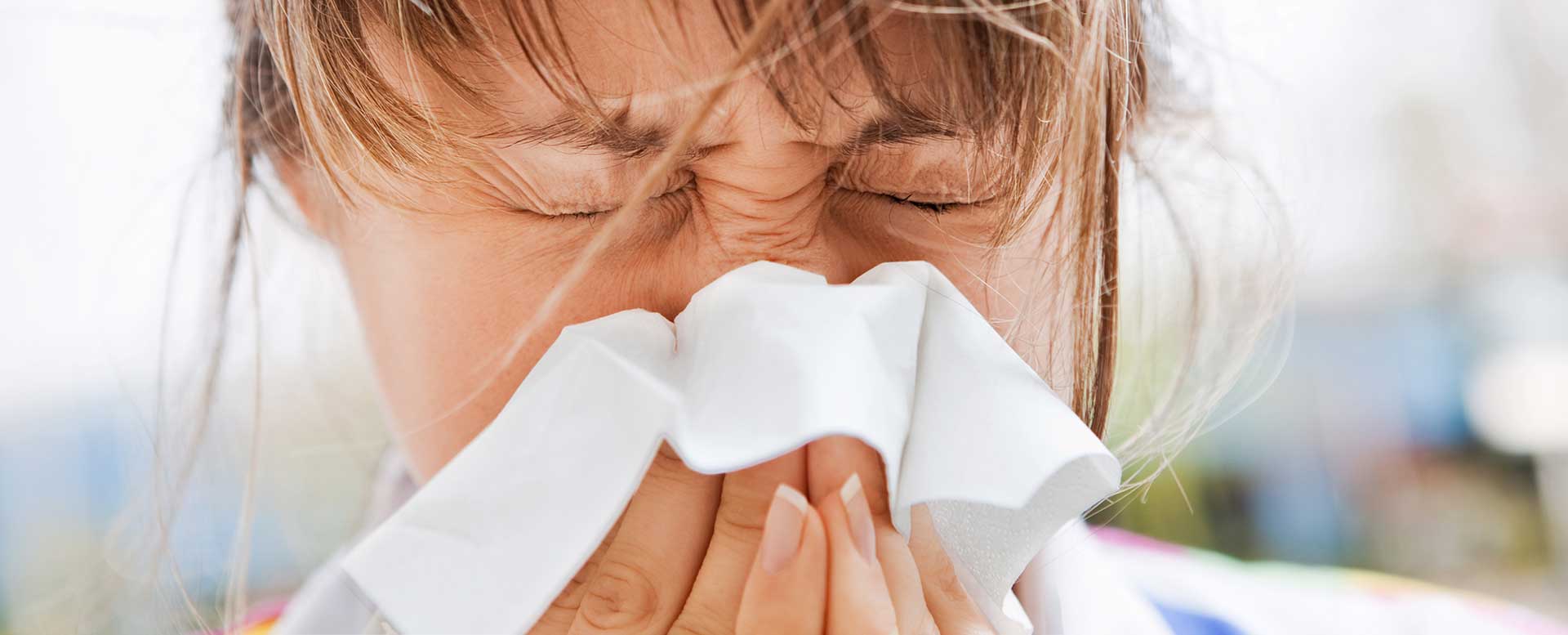 The problem is likely to get worse without medical care.
The problem is likely to get worse without medical care.
- Call your doctor now to discuss the symptoms and arrange for care.
- If you cannot reach your doctor or you don’t have one, go to the emergency room now. You may have a reaction after the epinephrine wears off.
- You do not need to call an ambulance unless:
- You cannot travel safely either by driving yourself or by having someone else drive you.
- You are in an area where heavy traffic or other problems may slow you down.
Allergy Symptoms | AAFA.org
What Are the Symptoms of an Allergy?
An allergy occurs when the body’s immune system sees a substance as harmful and overreacts to it. The symptoms that result are an allergic reaction. The substances that cause allergic reactions are allergens. Allergens can get into your body many ways to cause an allergic reaction.
- You can inhale allergens into your nose and your lungs. Many are small enough to float through the air. Examples are pollen, house dust, mold spores, cat and dog dander and latex dust.
- You can ingest allergens by mouth. This includes food and medicines you eat or swallow.
- Your body can have allergens injected into it. This includes medicine given by needle and venom from insect stings and bites.
- Your skin can absorb allergens. Plants such as poison ivy, sumac and oak can cause reactions when touched. Latex, metals, and ingredients in beauty care and household products are other examples.
SYMPTOMS OF AN ALLERGIC REACTION
The severity of symptoms during an allergic reaction can vary widely. Some of the symptoms of an allergic reaction include:
- Itchy, watery eyes
- Itchy nose
- Sneezing
- Runny nose
- Rashes
- Hives (a rash with raised red patches)
- Stomach cramps
- Vomiting
- Diarrhea
- Bloating
- Swelling
- Redness
- Pain
- Tongue swelling
- Cough
- Throat closing
- Wheezing (a whistling sound when you breathe)
- Chest tightness and losing your breath
- Feeling faint, light-headed or “blacking out”
- A sense of “impending doom”
Some of these symptoms can be sign of a life-threatening allergic reaction.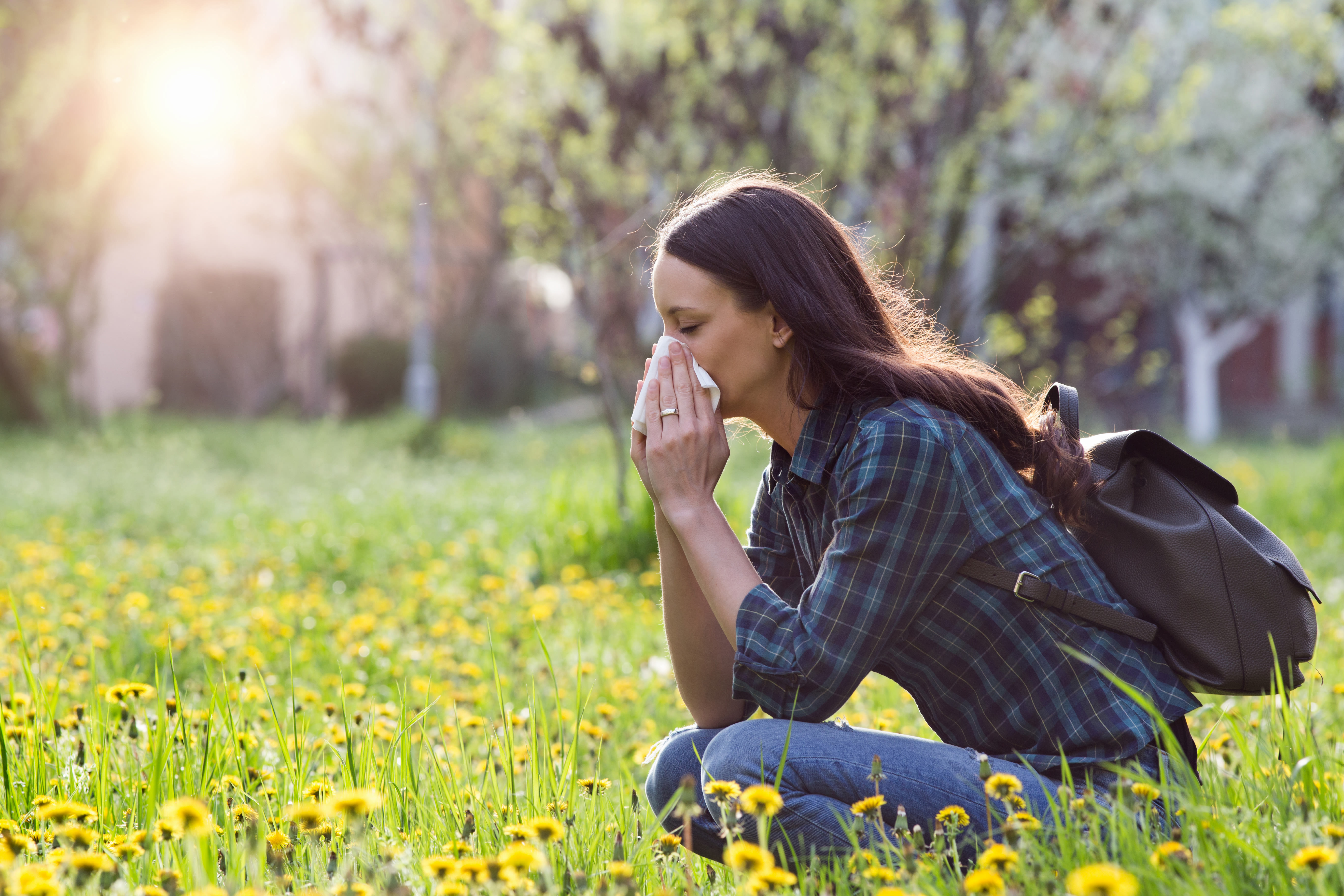
Anaphylaxis (anna-fih-LACK-sis) is a severe allergic reaction that can be life-threatening and requires immediate medical attention. It happens fast and may cause death. Symptoms usually involve more than one part of the body, such as the skin or mouth, the lungs, the heart and the gut. Learn more about anaphylaxis.
Eye allergies are common. Eye allergies are a reaction to indoor and outdoor allergens that get into your eyes.The tissue that lines the inside of the eyelid and outside of the eyeball becomes inflamed and swollen and leads to itching, redness, tearing and irritation of the eyes.
Skin allergies occur when your skin comes in contact with an allergen that your skin is sensitive or allergic to. Also, allergies to other things, like food you eat or proteins you inhale or touch, may cause symptoms to appear on your skin. The allergic reaction usually appears within 48 hours after the initial exposure to the allergen. Symptoms often include the following: redness, swelling, blistering, itching, hives and rashes.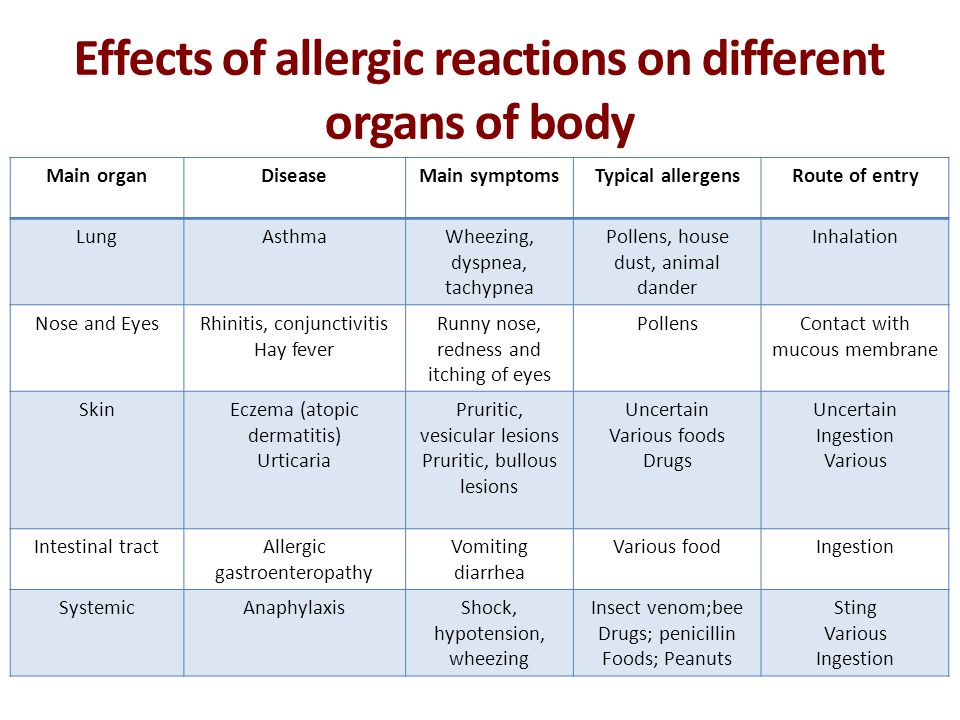 The allergen doesn’t have to be new to you. It can be something you’ve been using or eating for many years. Common skin allergies include allergic contact dermatitis, eczema, chronic urticaria and angioedema.
The allergen doesn’t have to be new to you. It can be something you’ve been using or eating for many years. Common skin allergies include allergic contact dermatitis, eczema, chronic urticaria and angioedema.
The word rhinitis means “inflammation of the nose.” When the nose becomes irritated by allergens or irritants, it may produce more and thicker mucus than usual. This drainage can irritate the back of the throat and cause coughing. Allergic reactions can also cause congestion, itchy nose or throat, sneezing, a runny nose and itchy, watery eyes.
Sinusitis is an infection or inflammation of the sinuses. A sinus is a hollow space. There are many sinuses in the body, including four pairs inside the skull. They serve to lighten the skull and give resonance to the voice. These sinuses are lined with the same kind of tissue that lines the inside of the nose. The same things that can cause swelling in the nose – such as allergies or infection – can also affect the sinuses.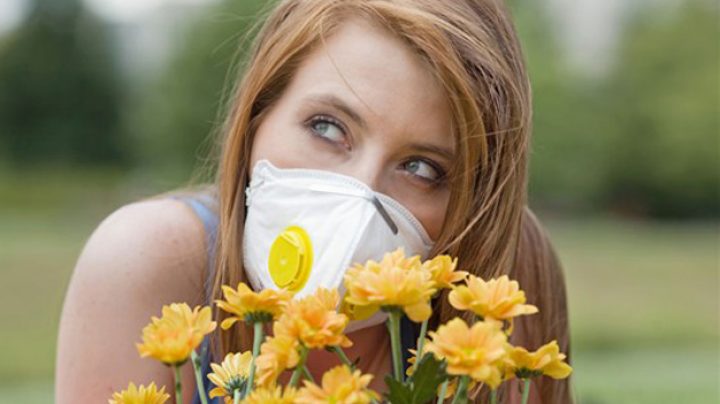 When the tissue inside the sinuses becomes inflamed, mucus discharge is increased. Over time, air trapped inside the swollen sinuses can create painful pressure inside the head. This is a sinus headache.
When the tissue inside the sinuses becomes inflamed, mucus discharge is increased. Over time, air trapped inside the swollen sinuses can create painful pressure inside the head. This is a sinus headache.
Medical Review November 2015.
What is allergy? Types, Causes, Symptoms, Treatments @DocOnline
What We treat
About Allergy
An allergy is a medical condition in which the body’s immune system reacts abnormally to a foreign substance. The substance that causes the allergy is called an allergen.
Allergic diseases have been rapidly increasing since the last few decades affecting 20% to 30% of the total population in India. The common allergic disorders in India comprises of asthma, allergic rhinitis, eczema, anaphylaxis, drug, food, insect allergy, and urticaria.
Causes of Allergy
Interaction of Genetic and environmental factors leads to the development of the allergy
- Genetic predisposition
- Environmental Factors: A broad range of allergen has been found in India owing to climatic variation, diverse vegetation, and different food habits
- Exposure to allergens or irritants may trigger the allergic reaction
- Dust mite droppings
- Animal dander
- Pollens grains
- Fungal spores
- Insect sting/bites
- Latex (natural rubber)
- Diet
- Medications
- Pollutant
- Tobacco smoke
- Exhaust fumes
- Exposure to microorganism [bacteria and viruses] during childhood
- Exposure to allergens or irritants may trigger the allergic reaction
The major routes of allergen exposure in India are
- Inhalation (airborne pollen grains triggers asthma)
- Contact (contact dermatitis)
- Ingestion (food allergy)
Symptoms of Allergy
The degree of an allergic reaction may vary from mild to severe. The body reacts differently to different allergens
The body reacts differently to different allergens
Common symptoms experienced in an allergic reaction are:
- Itchy skin, rash, hives (urticaria)
- Watery eyes
- Sneezing
- Difficulty in breathing
- Swelling of body parts exposed to the allergen
- Stomach ache
- Vomiting
Anaphylaxis (swelling of the lips, tongue, and throat, fainting) is an extreme form of allergy, which needs immediate medical attention.
Types of Allergies
| Allergy Types | Symptoms | Treatments |
|---|---|---|
| Food Allergy | Vomiting, stomach pain, rashes | Avoid Allergen food entirely |
| Skin allergy | Rashes, hives, itchy bumps | Take a cold shower
Apply calamine lotion Talk to Doctor |
| Dust allergy | Sneezing, coughing, teary eyes | Wear a mask while cleaning
Use clean pillows and linens |
| Insect Allergy | Pain, redness, rashes | Avoid insects
See the doctor |
| Drug Allergy | Rash, urticaria, shortness of breath | Avoid triggers
Antihistamines or oral /injected corticosteroids under supervision in a hospital or clinic |
| Allergic rhinitis | Running nose, nasal block, sneezing | Stay indoors during the pollen season
Talk to your GP |
Food Allergy
It is an allergic reaction to food or substance in food.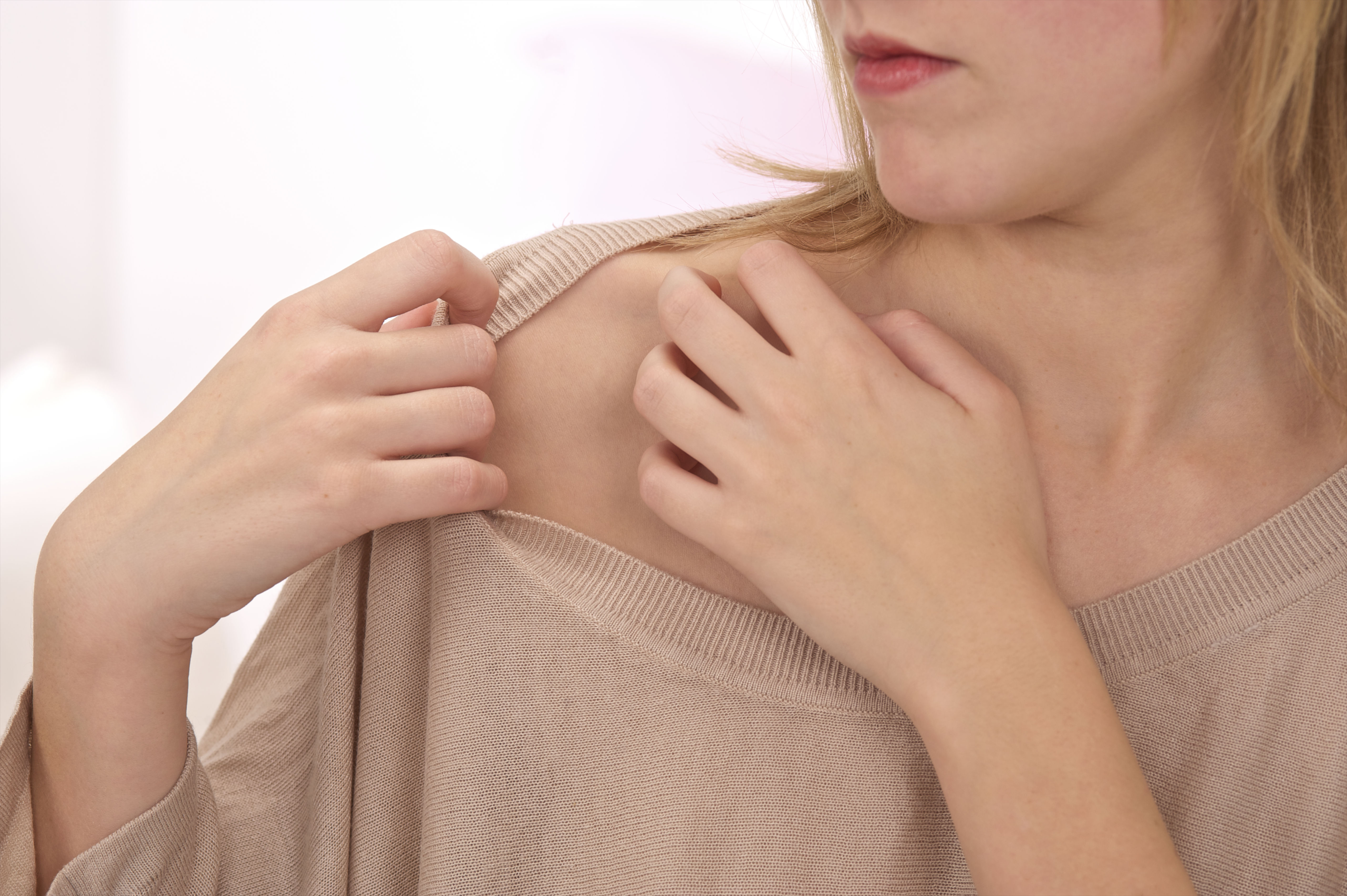 Common foods found to cause allergy are Legumes (Kidney beans, Black gram), seafood (prawns), eggplant, milk, egg.
Common foods found to cause allergy are Legumes (Kidney beans, Black gram), seafood (prawns), eggplant, milk, egg.
Signs and Symptoms of Food Allergy
| Body Parts | Signs and Symptoms of Food Allergy |
|---|---|
| Gastrointestinal tract | Vomiting, Stomach cramps, bloating, diarrhea |
| Skin | Rash, Hives |
| Cardiovascular system | Dizziness, fainting, weak pulse |
| Respiratory tract | Cough, shortness of breath |
| Other | Swelling of the lips, face, and throat
Anaphylaxis |
Skin Allergy
- Eczema (Atopic dermatitis): Itchy dry red skin due to exposure to allergens and food
- Contact Dermatitis: An allergic reaction due to contact of skin with an irritant or an allergen may cause a red rash, blisters, itching, cracking, scaling and burning
- Hives (urticaria): Raised, itchy bumps on the skin due to food, insect bite, medications
- Angioedema: Swelling in deep layers of skin due to allergic reactions to food, medications, insect bites
Dust allergy
Allergy due to dust mite, pollen grains, animal dander or fungal spore.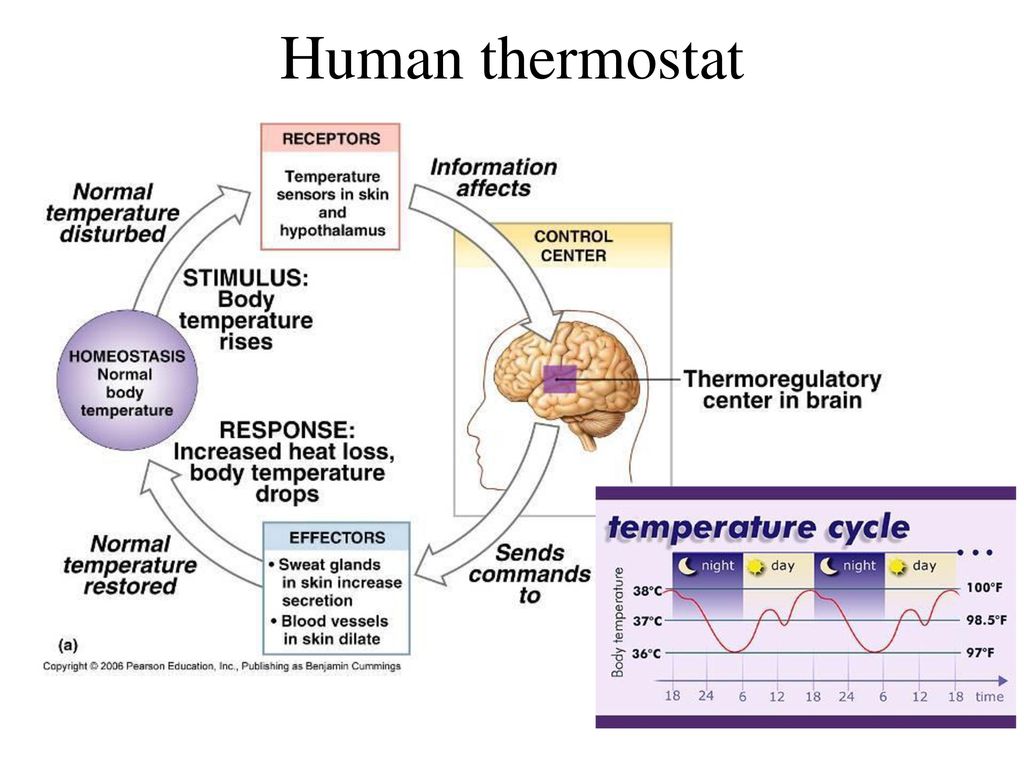
Insect Allergy
Allergy due to insect stings (bees, wasps) and bites (Mosquitoes, bedbugs, fleas).
Drug Allergy
Allergic reaction due to intake of liquid, pill or injectable form of medication.
Allergic rhinitis (Hay fever)
Seasonal (during pollen season) or Perennial ( throughout the year) allergic rhinitis occurs due to airborne pollen grains, dust mites, animal fur, fungal spores.
Management of Allergy
Diagnosis: Types of Allergy Tests
The 3 main tests for allergy are the skin prick test, blood test, and patch test.
Treatment of Allergy
The ideal solution is to stay away from the allergen that you know you are allergic to. However this is not always possible and treatment includes anti-allergic drugs like antihistaminics, decongestants, and steroids.
It is important to know about your allergies before you get affected. If you are not sure, or the symptoms are not subsiding then consult a doctor online to discuss your problems.
FAQ
Pollen grains, fungal spores, dust mites, animal dander, certain foods, drugs/medications, chemicals in cosmetics, perfumes, and insects.
The body’s immune system reacts abnormally to an irritant or an allergen to cause an allergic reaction.
Allergies are usually not dangerous but it can sometimes cause anaphylaxis which is a life-threatening condition.
Type I (Immediate hypersensitivity), Type II(Cytotoxic reaction), Type III(Immune complex reaction), and Type IV (Delayed hypersensitivity) reactions.
The best thing is to avoid triggers and the symptoms of allergy are relieved by appropriate medications.
Remove the trigger and oral antihistamines.
90,000 treatment of allergic lesions and skin rashes in Moscow
General description
Allergic skin lesions are a group of diseases with a genetic basis, the occurrence of which is stimulated by exposure to allergens.
Skin allergies can manifest and look different. The most common clinical variants are: contact allergic dermatitis, atopic dermatitis, urticaria, Quincke’s edema, eczema.
Reasons
Patients with allergies always have a hereditary predisposition to its occurrence.Among the relatives, there will certainly be allergy sufferers, and their allergies can manifest themselves in different ways: skin, food, allergic rhinitis, bronchial asthma – the form does not matter.
For the development of the clinical picture, exposure to a sensitizing substance, an allergen, is necessary. They can be dust, pollen of plants, chemicals in detergents, clothes, in hazardous industries, some food products, medicines, etc., as well as substances formed in the body itself under the influence of cold or sunlight, products of parasite metabolism.
Symptoms
Depending on the clinical form, skin allergy manifests itself in different ways.
Allergic contact dermatitis occurs in the area of contact of the skin with an allergen (cosmetics, detergents, clothing items), but the affected area has no clear boundaries. The skin can redden, become covered with bubbles, scales, crack, itch.
Atopic dermatitis looks almost the same, but it occurs when the allergen is generally exposed to the body, which means that it is localized not at the place of contact, but in characteristic areas – the face, neck, area behind the ears, natural folds of the skin, axillary, elbow, popliteal cavities.Itching is necessarily present.
Urticaria is a rash of many small reddish blisters that can appear for hours or days, then disappear, migrate to different parts of the body. The rash is very itchy.
Quincke’s edema is the most dangerous manifestation of skin allergy. It is a swelling of the skin and subcutaneous tissue. It is most often localized in the face and neck area. the subcutaneous tissue there is loose and can swell quickly. The danger lies in the possible complete obstruction of the respiratory tract.It occurs, as a rule, on intravenous administration of an allergen or oral administration, as well as on insect bites.
Eczema is a neuro-allergic disease that occurs when exposed to an allergen and a stress factor. It can manifest itself in different ways, most often it is an itchy area of redness with many blisters, crusts, weeping or dryness.
Diagnostics
Diagnostics is carried out on the basis of a clinical examination, anamnesis, as well as additional examinations:
- general and biochemical blood test
- blood test for IgE
- allergy skin tests
- elimination test
Prevention
Prevention consists in excluding contact with an allergen: a hypoallergenic diet, careful selection of household chemicals and cosmetics, working in a production facility without harmful chemicals, avoiding chronic stress, etc.d.
Treatment
Treatment, like prevention, primarily consists in the elimination of the allergen.
If this is not possible, resort to pathogenetic and symptomatic treatment:
- skin ointments with antihistamines or glucocorticoids,
- oral antihistamines and glucocorticoids,
- plasmapheresis.
SKIN ALLERGIC DISEASES | Center for ALLERGOLOGY in Stavropol
Skin allergy is a type of response of the human body to the action of an allergen.Its forms are very diverse and cause great discomfort, and can be very life-threatening.
Allergy refers to an immunopathological process that occurs when an allergy pathogen is exposed to the body. Allergy symptoms are extremely varied, but almost always accompanied by some kind of damage to the skin – at least hives.
What is a skin allergy?
The pathogenesis of any type of allergy develops according to the same scenario. In fact, this is the body’s immune response, but amplified several times.The allergy mechanism consists of 2 stages:
– the phase of an early immune response – when an allergy pathogen appears, IgE plasmacids are produced and bind to the receptors of mast cells and basophils. When the allergen reappears, IgE is reactivated, which serves as a signal for the synthesis of histamine and other mediators of inflammation – interleukin, cytoxin. Substances, getting into the surrounding tissue, cause contraction of the smooth muscles of the vascular walls, irritate the nerve endings, increase the secretion of mucus, and so on.Outwardly, this manifests itself as itching, sneezing, runny nose, rash and swelling on the skin;
– the phase of the late response is due to the accumulation of leukocytes, neutrophils, lymphocytes at the site of the alleged inflammation, and the body perceives such a reaction as a signal of inflammation. Under their action, the functional tissue is gradually replaced by connective tissue, which has a very negative effect on the state of the organs. The second phase, as a rule, appears 4-6 hours after the first, and lasts 1-2 days.
Skin allergies are part of this process.Its characteristic signs are: dryness and peeling, sometimes very strong; itching; redness and swelling of the skin.
The main manifestation of urticaria is a skin rash in the form of blisters of various sizes. A severe manifestation of urticaria is angioedema (previously it was called Quincke’s edema) or a combination of both.
Localization of rashes is different. With external stimuli, the areas in contact with the allergen are the first to suffer, when the pathogen enters the body by the respiratory tract or through the alimentary tract, any part of the body can be affected.
Allergodermatosis: the nature and types of rashes (lesions)
Allergodermatosis is a group of diseases of an allergic nature, which are manifested by various skin lesions.
Atopic dermatitis – caused by pollen, animal hair, bites, contact with household chemicals. It manifests itself as itching, dryness and irritation of the skin.Usually localized. It often occurs in children from 2 months of age.
Contact dermatitis is a response to direct exposure to an irritant: household chemicals, cosmetics, industrial reagents. It is characterized by redness, swelling of the skin, rashes, accompanied by severe itching. Blistering and skin erosion are possible.
Urticaria – for the resemblance to a burn on contact with nettles, these rashes got their name. It manifests itself in the form of red spots and flat pale pink blisters up to 5 mm in diameter.The rash itches a lot, and the blisters burst and the hives invade new areas of the skin. Urticaria is caused not only by contact with plants, but also by insect bites, stress, exposure to sunlight, exposure to cold or heat, too tight clothing against a background of sweating. There is also dermographic, aquagenic,
Eczema – an acute form of allergy. Abundant rashes are accompanied by the appearance of many blisters. The latter burst easily, leading to erosion of the skin, the formation of crusts, nodules and scars.Eczema is accompanied by severe itching, which causes insomnia, nervous disorders, and loss of appetite. Eczema is provoked by both external factors – stress, household dust, and internal – disorders in the endocrine system.
Toxicoderma – Usually caused by an acute infection or inappropriate medication. Toxicoderma looks like pink or red rashes, soon leading to the formation of blisters.
Neurodermatitis – can be an independent disease associated with skin inflammation, but more often it is a sign of an allergic reaction.Forms rashes in the form of red spots of various sizes. Spots can turn into plaques, merging with each other, often accompanied by swelling of the skin. Usually, neurodermatitis causes itching that gets worse at night. Neurodermatitis is a very specific response. Very often it is not caused by objective factors, but is a consequence of a strong nervous experience.
Quincke’s edema – edema of fatty and mucous tissue. Usually accompanied by acute urticaria. The symptom develops extremely rapidly and is very dangerous.Most often, edema is localized on the face – eyelids, lip, cheek, but the oral mucosa and the respiratory tract can also swell.
Lyell’s syndrome – the most severe drug allergy. At the same time, blisters form on the skin, and quite quickly turn into ulcers, cracks and open wounds. The disease causes severe dehydration, toxic damage to the kidneys, liver, and gastrointestinal tract. In the absence of urgent medical attention, it is fatal.
Steven-Johnson syndrome – a form of exudative erythema, accompanied by inflammation of the skin and mucous membranes.On the skin, it appears as a bright red rash, which soon begins to bleed. There is severe itching, swelling, burning sensation. The syndrome usually occurs when you are allergic to medicines or as a result of infectious diseases. It is extremely rare in children.
General symptoms and clinical signs in adults
There are common symptoms for all types of the disease.It is impossible to diagnose allergies by them. But, since the reaction occurs very quickly upon contact with the allergen, often loved ones guess about the real source of poor health.
Allergies develop very quickly, so you need to know about its types not so much in order to inform your doctor as in order to help the patient. And in this sense, it is necessary to distinguish between signs of mild and severe forms.
Symptoms of mild form are as follows:
rash, itching, possibly blisters at the site of contact with the allergen;
tearing eyes, redness;
copious but clear nasal discharge;
sneezing – sneezing in series is typical for allergies.
In these cases, it is enough to rinse the place of contact – the bite mark, for example, with warm water, apply a cold compress and drink some antihistamine – suprastin, chloropyramine.
The severe form has the following symptoms:
hoarseness, difficulty in swallowing and pronunciation, incoherence of speech;
shortness of breath, throat cramps, shortness of breath;
severe general weakness, dizziness, loss of consciousness is possible;
increased heart rate, low blood pressure;
nausea and vomiting are possible, but not for all types of allergies;
As a rule, the patient experiences acute fear and panic.
In these cases, an ambulance must be called immediately. Before the ambulance arrives, you need to take off tight clothes, provide air flow, remove the allergen, if its nature is known – plant pollen, animal. If vomiting is observed, care should be taken to ensure that the patient rolls over to the side and does not swallow the tongue. In cardiac arrest, chest compressions and artificial respiration are needed.
90,000 Why allergies are dangerous and how to recover from them
Allergies are one of the most common diseases on Earth and over the years the frequency of allergic reactions only increases.Why does an allergy occur, is it possible to recover from it and why it is necessary to do allergy tests as early as possible, Gazeta.Ru figured out.
Allergy is an increased sensitivity of the body to the effects of certain environmental factors: chemicals, microorganisms and their metabolic products, food, etc. The development of allergies is based on the process of sensitization – the acquisition of a specific hypersensitivity by the body to foreign substances.
In case of allergy, the human body produces antibodies for specific proteins contained in the allergen.
Increased production of immunoglobulin E causes the release from mast cells – one of the types of white blood cells – biologically active substances, including histamine, which leads to edema, smooth muscle spasms, and increased heart rate.
One of the risk factors for the development of allergies is a genetic predisposition. There is also a theory of the influence of hygiene, according to which the observance of hygienic standards leads to the fact that in childhood the human immune system is not sufficiently loaded and, as a result, begins to fight even with harmless substances.
The theory is confirmed by epidemiological data – as well-being and cleanliness in the country grows, the frequency of allergic reactions also increases.
An allergic reaction can manifest itself both locally and affect the entire body. Among the local symptoms are swelling and pain of the nasal mucosa, redness, pain, pain in the conjunctival region, shortness of breath, skin rashes at the site of contact with the allergen. A systematic allergic reaction – anaphylaxis – manifests itself in the form of a rash all over the body, edema, bronchospasm, hypotension.
Today, according to various sources, from 40% to 90% of the world’s population suffers from allergies.
“The prevalence of allergic diseases around the world is reaching catastrophic proportions, both in developed and developing countries,
– Recognized in White Paper of the World Federation of Allergy Asthma and Clinical Immunology Societies. – The problem of allergy in childhood is extremely serious – over the past 20 years, the increase in its prevalence in children has been especially pronounced.
According to WHO statistics, worldwide more than 200 million people suffer from asthma alone , the annual number of deaths from asthma is estimated at hundreds of thousands.
Another common type of allergy is food allergy. From it, according to data of of the World Allergy Organization, up to 520 million people suffer. The most common food allergens are nuts, seafood, citrus fruits, honey, milk. Also, about 20% of people have experienced allergic urticaria, up to 30% – with rhinitis, 10-20% – with drug allergies.
The most dangerous manifestation of allergy is anaphylactic shock, a rapid and sharp increase in the body’s sensitivity upon contact with an allergen. Its most prominent symptoms are swelling and difficulty breathing due to laryngeal edema.
And if allergic rhinitis does not pose a serious threat to life, then anaphylaxis often becomes the cause of death. Earlier, Gazeta.Ru already wrote about several unusual cases of anaphylactic shock.
For example, an eighteen-year-old boy from London, celebrating his birthday with a girl, died after eating fried chicken in a diner.Death from anaphylaxis overtook him in line for the Ferris wheel.
A San Diego woman killed by her adherence to alternative medicine – a naturopath to whom she complained of eczema was trying to cure her with turmeric infusion therapy.
When the mixture was injected, the woman stopped answering questions, and the concerned naturopath called the doctors. They fought for the woman’s life for almost a week, but they could not save her.
And in Geneva, a man received a prison sentence for killing a neighbor with wasps.He wanted to remove the hornets’ nest from the terrace, the disturbed wasps flew out of it and went to the neighboring house, where there was a married couple on the terrace. The woman survived after the bites, but her husband was less fortunate – he suffered from an allergy to insect bites and died two days later from developing anaphylaxis.
Men, on the other hand, may suffer from an allergic reaction to their own semen. At least, it is allergy that is considered the main cause of post-orgasmic malaise syndrome – a group of physical and cognitive symptoms manifested after ejaculation, including speech impairment, memory problems, deterioration in mood, decreased vision, headache, fever, sweating.
The allergic nature of the disease is indicated, in particular, by the fact that with subcutaneous injections of their own sperm in men suffering from this syndrome, an allergic reaction developed. And with regular injections, men reported a reduction in symptoms.
The cause of the allergy is not always obvious. American researchers studied 90 140 70 cases of unexplained regular allergic reactions and found that some of them, most likely, were caused by the molecule galactose-alpha-1,3-galactose contained in red meat.Usually, the reaction to food allergens manifests itself within 5-30 minutes after eating the product, however, in the case of red meat, the allergy made itself felt only after 3-6 hours.
“The unusually long interval between a meal and an allergic reaction is likely why galactose-alpha-1,3-galactose allergy is often misdiagnosed,” the researchers said. –
If you start having trouble breathing at night, you can’t blame the hamburger for dinner. ”
After cessation of red meat in patients with allergy to galactose-alpha-1,3-galactose, allergic reactions were not observed for several years.
Skin tests are used to diagnose allergies – several allergens are injected subcutaneously or applied to small scratches on the patient’s skin, each of which is assigned a number corresponding to the allergen used.
A more accurate method is to determine the level of total and specific immunoglobulins E in the blood serum.The task of immunoglobulins is to fight toxins, viruses and bacteria. Normally, the level of IgE is quite low and its growth can be used to determine the presence of an allergic reaction to a specific substance and the degree of its severity.
It makes sense to do allergy tests at an early age. Researchers from the Karolinska Institute in Sweden found that detecting allergens in childhood predicts the development of allergic rhinitis and asthma during adolescence.
They tested 1,034 children for allergic reactions to more than 100 allergen molecules.It turned out that in this way it is possible to predict the development of respiratory allergy at a later age with an accuracy of 90%. The results will allow taking timely preventive measures, and will also be useful in the development of new methods of treating allergies in children.
The surest way to prevent an allergic reaction is to avoid contact with the allergen. Antihistamines are used to relieve symptoms.
Also, in recent years, the direction of immunotherapy has been actively developing.Treatment takes several years, during which the patient regularly receives increasing doses of the allergen. This leads to a decrease in the severity or even complete disappearance of symptoms.
For example, recently the French biopharmaceutical company DBV Technologies told about its success in developing a peanut allergy patch.
After three years of using the patch, 83% of the 6-11 year olds in the study were able to eat a gram of peanuts without any allergic symptoms.This is 10 times more than at the beginning of the study.
Older people also responded well to treatment, but the most pronounced progress was in children. Each patch contains the same protein as peanuts, and once glued to the skin, the protein comes into contact with the immune system. In this form, it does not enter the bloodstream and does not cause a severe allergic reaction.
Another form of immunotherapy involves intravenous injections of anti-IgE monoclonal antibodies, which bind free IgE and IgE on the surface of lymphocytes, signaling the destruction of IgE.
It should also be borne in mind that proteins contained in breast milk are capable of protecting a child from allergies.
Researchers fed female mice with egg white, and when they had offspring, they put offspring of mice that did not receive egg white to the lactating female. After feeding, it turned out that not only the mouse’s own offspring, but also the mice fed by it from other females, are less susceptible to egg white allergy. The most pronounced effect was observed if the female received protein both before and during pregnancy and during feeding.
But mice born to a female fed with egg white, but fed by another mouse, were only marginally protected from allergies compared to the control group.
Allergy to the sun – photodermatitis (photodermatosis) and its prevention
The sun’s rays not only warm us with their warmth in the spring-summer period and delight us in winter, but also help to strengthen the immune system. Unfortunately, exposure to the sun can cause an allergic reaction in some people.
Allergies to the sun, photodermatitis (photodermatosis) are diseases caused by increased sensitivity of the skin to the sun’s rays. This is not at all a rare occurrence. Statistics show that about 20% of people around the world are faced with this disease.
Sun allergy actually means photodermatitis or photodermatosis. The toxic or allergic effect of the sun is manifested when the sun (ultraviolet) rays interact with any substance on the skin (exogenous photodermatitis) or in the skin (endogenous photodermatitis).
Sun allergy in the form of exogenous photodermatitis
The most striking example of exogenous photodermatitis is the so-called meadow dermatitis. In the summer, during the flowering period, many meadow plants secrete special substances – furocoumarins, which are deposited on the skin when a person is in these places. With simultaneous exposure to ultraviolet radiation, some people who are sensitive to it may experience redness of the skin and vesicles (erythema, vesicles, bullae).The rash is accompanied by severe itching. In the future, long-term pigmentation remains on the affected skin areas.
An allergy to the sun or photodermatitis can also occur if a person who is sensitive to it is anointed with a cream or ointment, or has used perfume and deodorant before going out into the sun. Substances in various cosmetics or perfumery products can react with ultraviolet rays and cause an allergic reaction. Such properties are possessed, for example, by eosin, which can be found in lipstick, and para-aminobenzoic acid (PAVA), which is part of some sunscreens.In addition, polyunsaturated fatty acids, retinoids, bergamot oil, St. John’s wort, rose, musk, sandalwood, dill juice, parsley, boric acid, salicylic acid, phenol, mercury preparations have a similar effect.
People with fair skin and small children, whose skin defense mechanisms are much weaker, are more likely to suffer from sun allergies.
Photodermatitis is often caused by many drugs. This effect is possessed, in particular, by sulfonamides, barbiturates, chlorpromazine, some antibiotics (doxycycline, tetracycline), antihistamines, some cardiovascular agents (amiodarone, trasicor), cytostatics, some nonsteroidal anti-inflammatory drugs (ibuprofen, aspirin), oral contraceptives.
In addition, an increased reaction of the skin to the sun’s rays appears when the skin is “weakened” by some additional effect – peeling, tattooing with cadmium salts.
Sun allergy as endogenous photodermatitis
This group of photodermatitis includes quite rare diseases, in the development of which disturbances in the functioning of the body’s immune system, as well as various metabolic disturbances (disturbances in metabolism) play an important role.Endogenous photodermatitis includes, in particular, porphyria, pigmented xeroderma, solar eczema, solar pruritus, Hydroa vacciniformia, polymorphic photodermatosis.
As a rule, these reactions can proceed by two mechanisms: 1) phototoxic reaction and 2) photoallergic reaction. Phototoxic reactions are much more common than photoallergic reactions.
How does sun allergy or photodermatitis usually manifest?
The main symptoms of photodermatosis:
- skin redness and inflammation,
- peeling skin,
- often accompanied by intense itching and burning,
- rashes can be in the form of folliculitis (abscesses) or papules.
Often this condition does not develop immediately. Unlike a burn, it can occur several hours after you left the beach, and in some cases even after returning from the resort. A phototoxic reaction can occur several hours after exposure to the sun, while a photoallergic reaction can occur even a few days after exposure to the sun.
Increased risk of sun allergy:
- in people with naturally fair skin;
- A number of drugs can make skin burns faster – these include tetracycline antibiotics, sulfa drugs, pain relievers, etc.;
- also the presence of atopic dermatitis or another type of dermatitis increases the risk of sun allergy;
- Some skin allergy symptoms are triggered when your skin is exposed to a certain substance and then sunlight. Some common substances responsible for this type of reaction include fragrances, disinfectants, bleach, and even some of the chemicals used in sunscreens;
- In addition, an allergic reaction from exposure to the sun can also develop in those who, the day before, performed cosmetic procedures using cadmium salts (tattoo, chemical peeling).
90,033 in pregnant women;
90,033 in young children;
90,033 who have relatives with sun allergies. You are more likely to be allergic to the sun if you have a brother, sister, or parent who is allergic to the sun;
90,033 those who abuse tanning salons;
Photosensitizers – cause of sun allergy
Certain vegetables and plants can cause sun sensitivity when they come into contact with the skin. Mango peels, lime juice, parsnips, celery can cause temporary discoloration (darkening) of the skin exposed to the sun. Major phototoxic fruits and vegetables: celery, carrots, rice, parsley, parsnips, and all types of citrus fruits. Therefore, before going to the beach, do not eat oranges, tangerines or grapefruits.There may be swelling, redness and itching on the surface of the skin, where there are drops of juice from these fruits. And the more active the sun, the sharper the reaction of the body will be.
Prevention of sun allergy (photodermatitis and photodermatosis)
Unfortunately, there are not many methods of preventing such allergies.
If you have very sensitive skin, make it a rule to sunbathe under an awning or umbrella. Avoid sun exposure during the most active hours (11:00 to 16:00).Protect yourself with a headgear and loose clothing made from natural fabrics: linen, cotton. Children have a very weak protective reaction of the skin, so babies under three years old are generally categorically not recommended to be in direct sunlight.
Use sunscreens with high photoprotection from well-known brands, and with regularity at least every two hours. Pay attention that the cream contains protection from UVB rays (SPF) and UVA rays (PPD) – they influence the occurrence of photodermatosis.
Note that wavelength plays a big role. Try not to travel to resorts where the sun is especially active.
Recommendations for the prevention of photoallergy on the beach:
- Do not use cologne, perfumes or regular moisturizers before going to the beach. They contain alcohol, which can cause burns in the sun.
- Sunscreen should be used in your case as often as possible. Just pay attention to its composition.A fat-based product can trigger allergies. It is better to choose a hypoallergenic spray with a protective SPF factor.
- It is best not to use a waterproof sunscreen – it will clog your pores and cause ulcers to develop on your skin. When going to the beach, you should opt for a water-soluble product.
If it is not possible to see a doctor, how to relieve acute manifestations of allergy to the sun?
Nothing. Only a doctor will be able to understand: manifestations on the skin are related to phototoxic reactions, or this is a manifestation of another disease.Often, “folk” methods only aggravate the course of toxic and allergic reactions.
Drug allergy – (Di Center clinic)
Drug allergy is a reaction of the human immune system to certain drugs or to certain substances in the composition of these drugs. This type of allergy is accompanied by local or general clinical symptoms. An allergic reaction to drugs can only be when it is re-introduced into the body, therefore, belongs to the category of secondary reactions.
Patients with drug allergies are conventionally divided into two categories according to the form of diagnosis: occupational drug allergy and acquired as a result of treatment of another disease.
Acquired drug allergy is most often treated in parallel with the disease that caused the complication. A professional drug allergy occurs in people who have constant contact with drugs due to their professional duties (doctors, pharmacists, etc.)).
There are a number of factors that cause drug allergies: constant contact with drugs, prolonged or frequent use of drugs, heredity, a tendency to fungal diseases, allergic diseases (asthma and hay fever), and the body’s tendency to food allergies.
The likelihood of developing drug allergy becomes higher with intramuscular administration of drugs, with intravenous administration of drugs, the level of risk rises to a maximum, but with the oral method of taking drugs, the risk of developing drug allergies is practically reduced to zero.
Symptoms
In medicine, there are three types of drug allergy symptoms.
The first type is allergic reactions that appear instantly or within the first sixty minutes after the drug enters the body, that is, immediately after the allergen comes into contact with the body. And the symptoms can be as follows: anaphylactic shock, acute urticaria, bronchial spasms, Quincke’s edema, hemolytic acute anemia.
The second type is an allergic reaction, which manifests itself within the first twenty-four hours after contact of the body with an allergen, this is a subacute type reaction. She is characterized by the following symptoms: agranulocytosis, thrombocytopenia, maculopapular exanthema, fever.
And the third type of symptoms for drug allergies is a protracted reaction, that is, manifestations begin within a few days after contact with the allergen. This allergy manifests itself as follows: allergic vasculitis, arthralgia, polyarthritis, lymphadenopathy, nephritis and allergic hepatitis may occur.
Almost all three groups of allergic reactions to drugs are characterized by skin rashes that can last up to seven or eight days. And such manifestations are called drug dermatitis.
The peculiarities of the skin symptoms of drug allergy include polymorphism, when the rash can be in the form of spots, pimples, blisters or nodules.
Diagnostics
First of all, in order to identify and diagnose drug allergies, the doctor takes a thorough history.Often, it is this diagnostic method that is sufficient to accurately determine the disease.
The main question in the collection of anamnesis is an allergic history. And besides the patient himself, the doctor asks all his relatives about the presence of various types of allergies in the family.
Further, in case of not determining the exact symptoms or due to a small amount of information, the doctor conducts laboratory tests for diagnosis. These include laboratory tests and provocative tests.Testing is carried out in relation to those drugs to which the body is supposed to react.
Laboratory methods for diagnosing drug allergies include: radioallergosorbent method, enzyme-linked immunosorbent assay, Shelley’s basophilic test and its variants, chemiluminescence method, fluorescent method, test for the release of sulfidated leukotrienes and potassium ions.
In rare cases, the diagnosis of drug allergy is carried out using provocative test methods.This method is applicable only when it is not possible to identify the allergen using anamnesis or laboratory tests. Provocative tests can be carried out by an allergist in a special laboratory equipped with resuscitation devices.
In today’s allergology, the most common diagnostic method for drug allergy is the sublingual test.
Prevention
Prevention of drug allergy can only be secondary, it is based on refusal or extremely careful use of drugs that have already caused an allergic reaction in the body.
Treatment
The first thing that is used in the treatment of drug allergies is a complete exclusion from the course of a medication that causes an allergic reaction. If an allergy has arisen against the background of several drugs taken simultaneously, all of them are excluded.
Further, a hypoallergenic diet is prescribed, in the diet of which a strict restriction of carbohydrates must be observed and all foods and dishes with acute taste sensations (sour, sweet, salty, bitter, smoked, spices) are excluded.During such a diet, with drug allergies, an abundant drink of soft clean non-carbonated water is prescribed.
Drug allergy with manifestations such as urticaria or angioedema is usually relieved with antihistamines. If after a certain period of time the symptoms do not disappear and the patient’s condition worsens, parenteral glucocorticosteroids are prescribed.
The use of oral hormonal drugs is effective in the treatment of drug allergies with symptoms of vasculitis, with severe skin lesions and hematological reactions.
With this type of allergy, you should never self-medicate. All therapeutic measures must be carried out under the strict supervision of a specialist doctor.
Allergy is an increased sensitivity of the immune system to the effects of certain substances, which are commonly called allergens.They can enter the body in different ways – through the respiratory tract, through the digestive system, the skin, or when drugs are injected into a vein or muscle. Allergy tendencies are hereditary, and even young children, starting with newborns, can suffer from it. Allergies can manifest themselves in different forms, but acute and severe allergic reactions requiring urgent care are especially dangerous: anaphylactic shock , Quincke’s edema and urticaria . These conditions are dangerous for the health and even for the life of the child, in which case it is important to provide the baby with help correctly and quickly even before the ambulance arrives ! Anaphylactic shock Acute general allergic reaction with a sharp violation of all vital functions is associated with a large release of special substances – allergy mediators (histamine and its analogs).A shock is possible when eating highly allergenic foods – exotic dishes, citrus fruits, strawberries. With food allergies or oral medications, the reaction may take about 15-30 minutes. Especially dangerous are foods such as cheeses, eggs, sauerkraut, fish and seafood, tomatoes, chocolate and strawberries, citrus fruits. When taking or administering medications, stinging insect bites, inhalation of allergens, an almost instantaneous reaction of the body develops with a sharp drop in blood pressure, loss of consciousness, nausea and vomiting, respiratory distress and skin rashes.With the introduction of medications or insect bites, reactions develop so quickly that the child may not even have time to report that he is feeling bad At the first sign of shock, should immediately call an ambulance and proceed to provide emergency care. The life and health of a child sometimes depends on the speed and correctness of this assistance. It is important that the child finds himself in a hospital as soon as possible. What to do before the ambulance arrives?
Quincke’s edema Local tissue edema arising in the face and eyelids, ears, hands, genitals and soft palate, neck and larynx, digestive tract. Due to strong tissue compression, edema can lead to organ dysfunctions and suffocation. It lasts from a couple of hours to a day and gradually disappears, it can give rise to fever, diarrhea, abdominal pain, with an increase in edema – loss of consciousness. First aid for angioedema: – immediately call an ambulance, calm the child, – stop the intake of the allergen before the doctors arrive, – do not feed or water the child, – give activated charcoal, make an enema. – Hospitalization in a hospital . Urticaria This is an acute allergic reaction with a profuse skin rash in the form of dense red spots of various sizes on any surface of the body.Areas of rashes are 1-3 cm in size, raised above the surface of the skin, when pressed on the elements, they form white dots. The rash lasts up to two days, disappearing without a trace, lesions of the mucous membranes with angioedema, difficulty breathing, vomiting and diarrhea may occur. First aid for urticaria – immediately call an ambulance, calm the child, – stop the intake of the allergen before the doctors arrive, – do not feed or water the child, – give activated charcoal, make an enema |
Nervous Allergy – Healthy Generation Medical Center (Dnipro)
Allergy is an inadequate reaction of the body to external stimuli caused by dysfunction of the immune system.
The decreased immune status can be explained by changes in the central nervous system. Therefore, recently the diagnosis of “nervous allergy” has begun. The intensity of the allergic condition depends on the emotional and mental stability of the person.
Allergies on nervous grounds are most often exposed to women who react more strongly to negative circumstances than men.
Chronic diseases, old age – these are the factors that reduce the body’s defenses, and therefore contribute to the occurrence of an allergic condition.
Long-term difficult experiences can cause allergies even in a person with a strong nervous system.
There is reason to believe that a hereditary predisposition may be an important factor provoking allergic reactions.
Patients diagnosed with “nervous allergy” are characterized by an increased level of anxiety and irritability.
They are easily suggestible, get tired quickly.
They have dysfunctions of the gastrointestinal tract and bladder, jumps in blood pressure.
The clinical manifestation of an allergy on a nervous basis can have various forms and intensities.
Most often it is manifested by skin reactions: dermatitis, eczema, psoriasis.
The rashes are in the form of papules or blisters.
With this type of allergy, the patient suffers from severe itching.
The patient’s condition may be aggravated by dizziness, headaches, nausea, vomiting and impaired consciousness. In rare cases, an allergy on a nervous basis manifests itself as symptoms of bronchial asthma.
In case of allergy on a nervous basis, it is most difficult to identify the provoking factor.
In order to correctly establish the cause of skin reactions, patients are assigned tests for chemical, physical, biological antigens. A special blood test is used for the level of histamine and some other substances that determine the immune status of the body.
The task of the doctor is to activate the desensitization mechanisms and, with the help of the neurohumoral system, relieve the patient from this disease.
Therefore, the treatment of allergies of nervous origin is carried out in a comprehensive manner using various methods:
- medicinal,
- reflex-manual therapy (acupressure, acupuncture),
- psycho-therapeutic techniques,
- homeopathy.


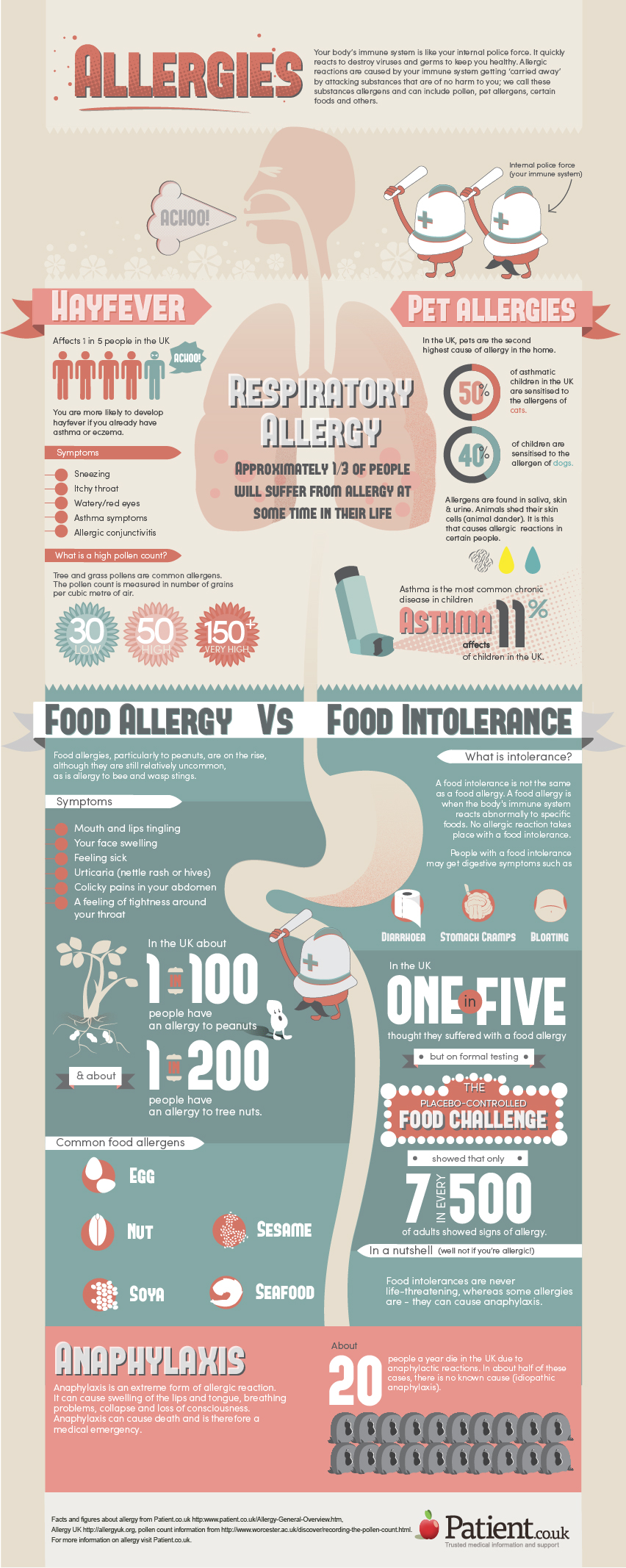 Babies and older adults tend to get sicker quicker.
Babies and older adults tend to get sicker quicker.

